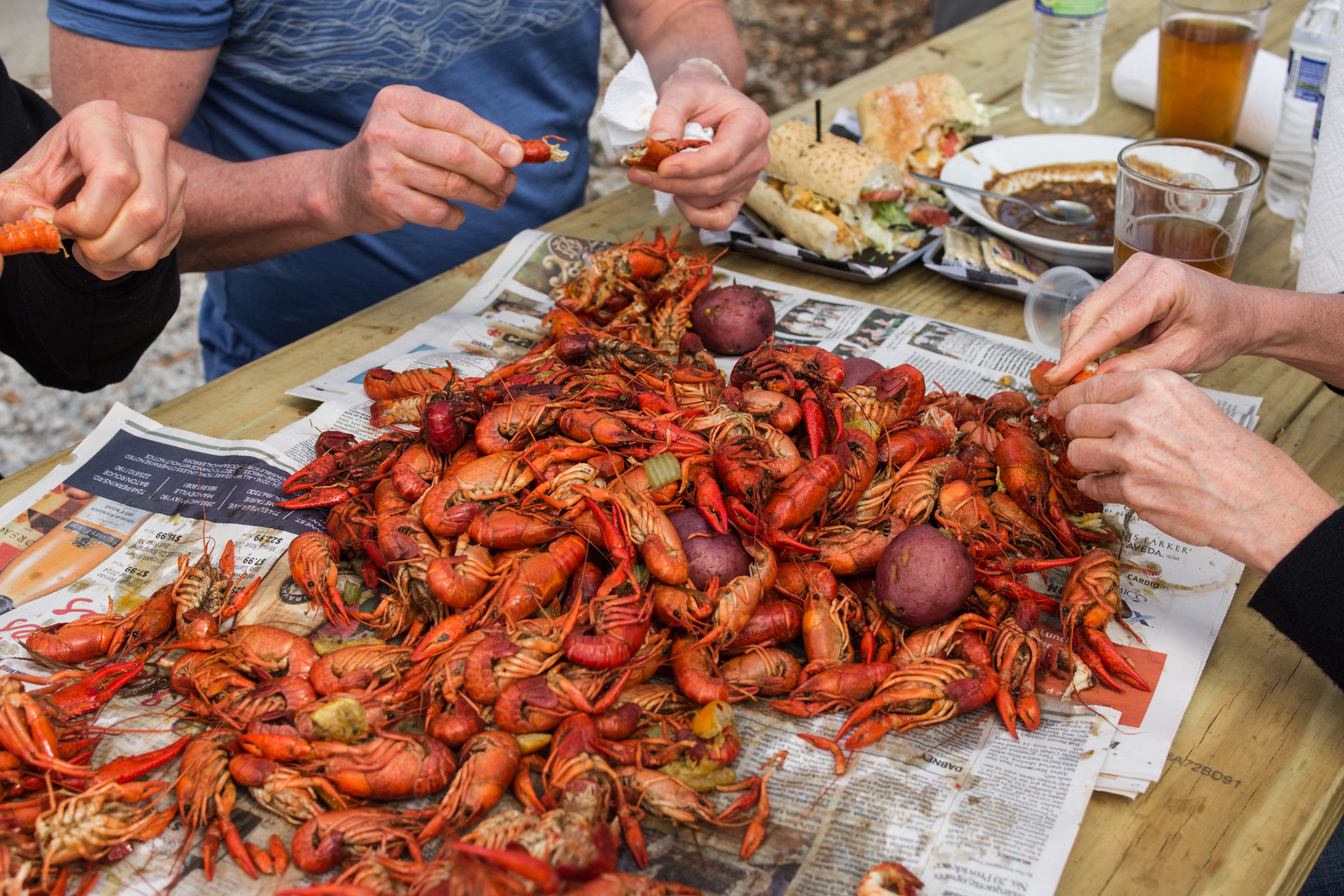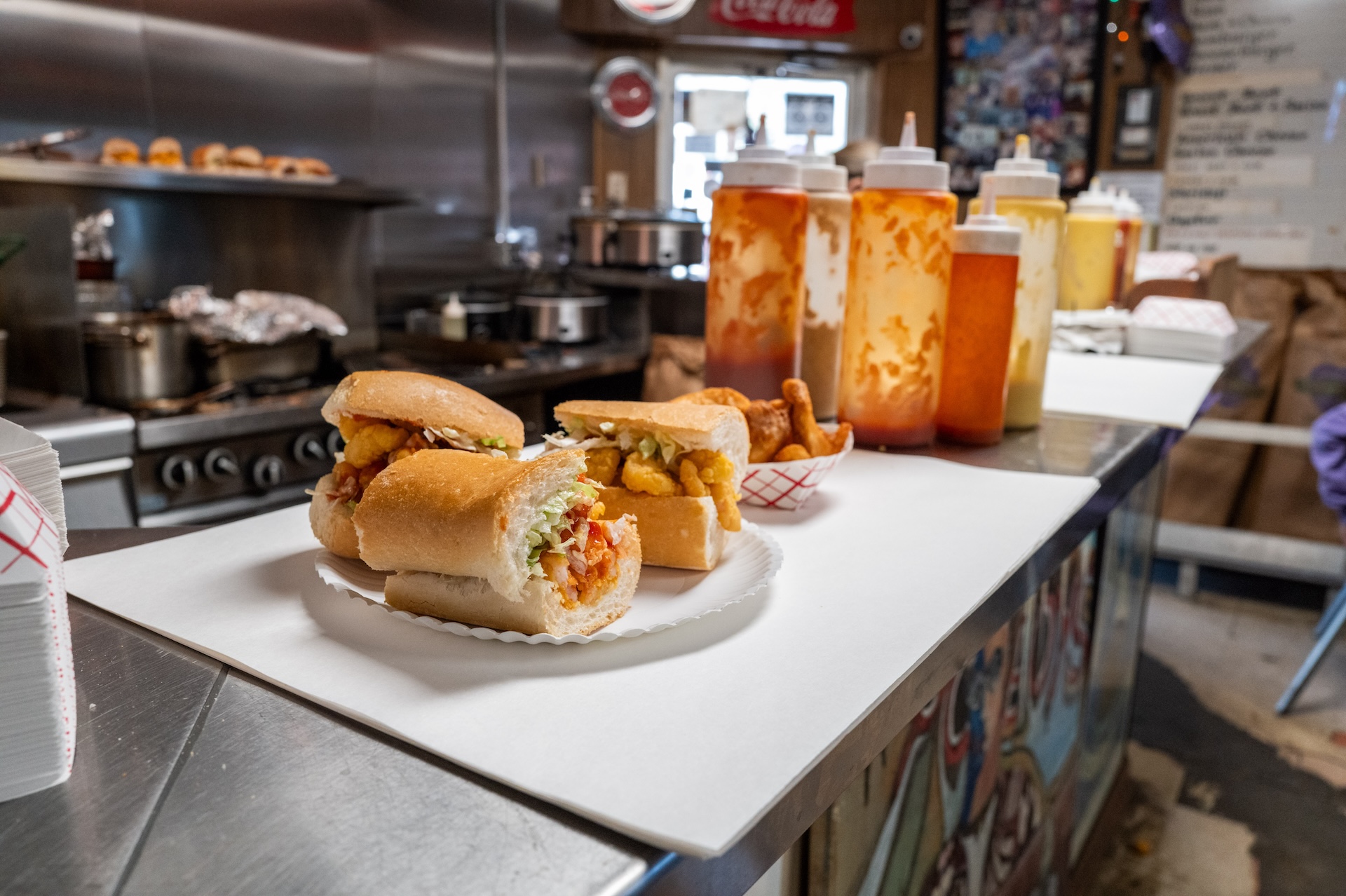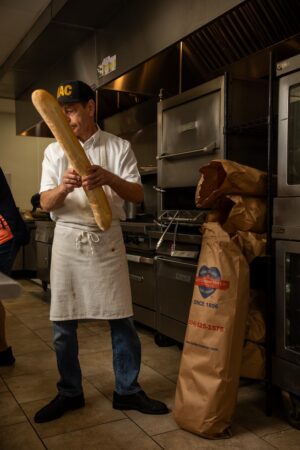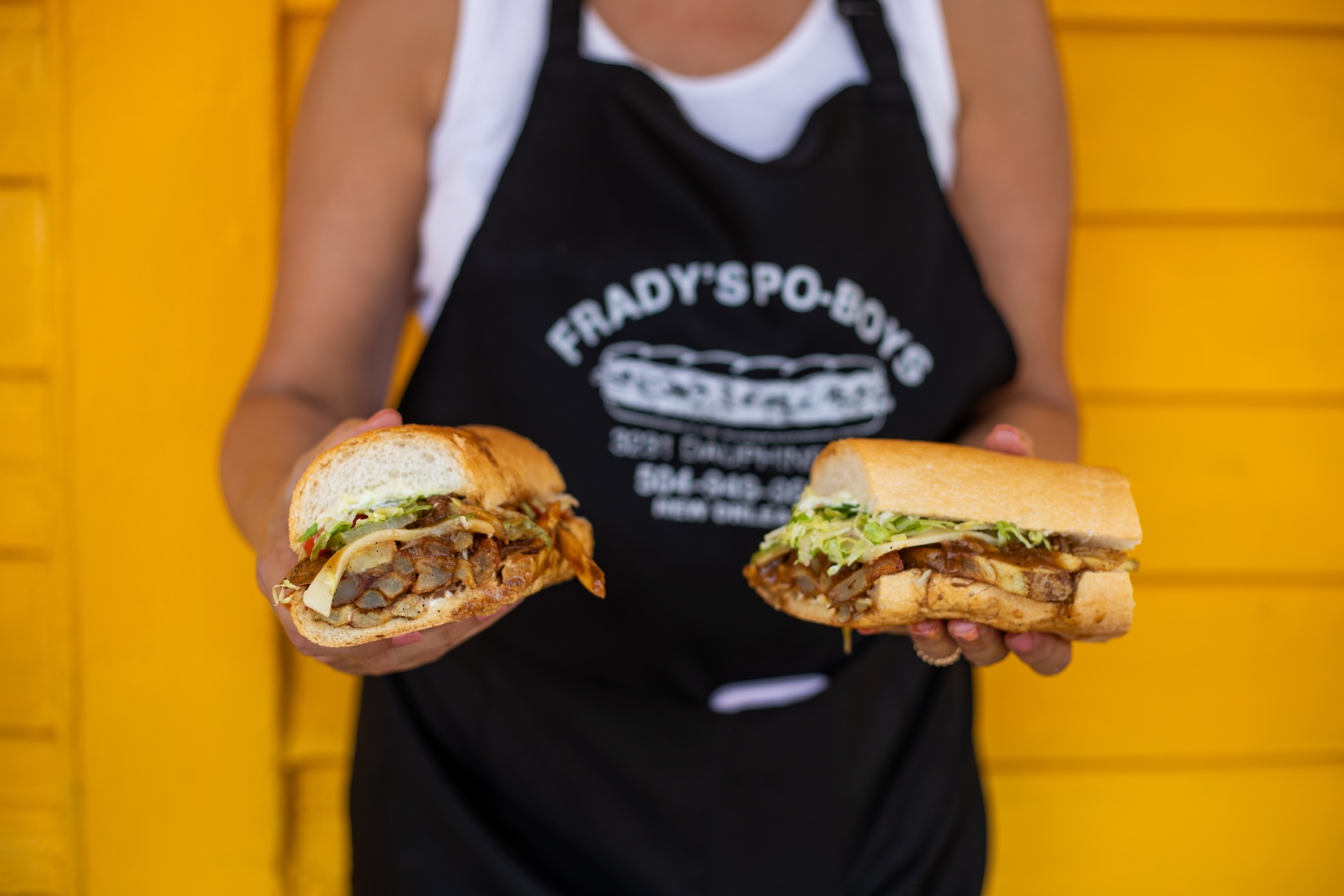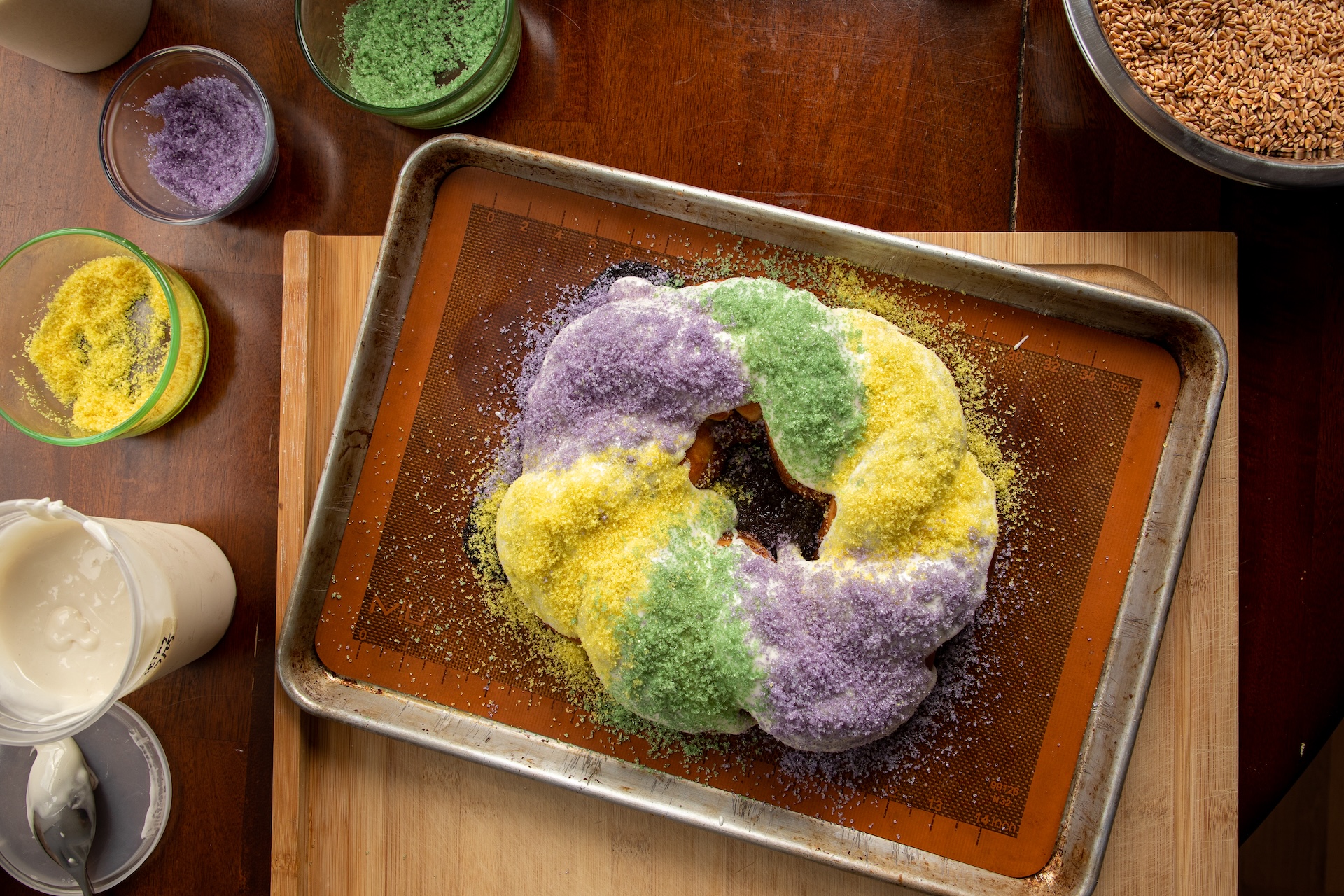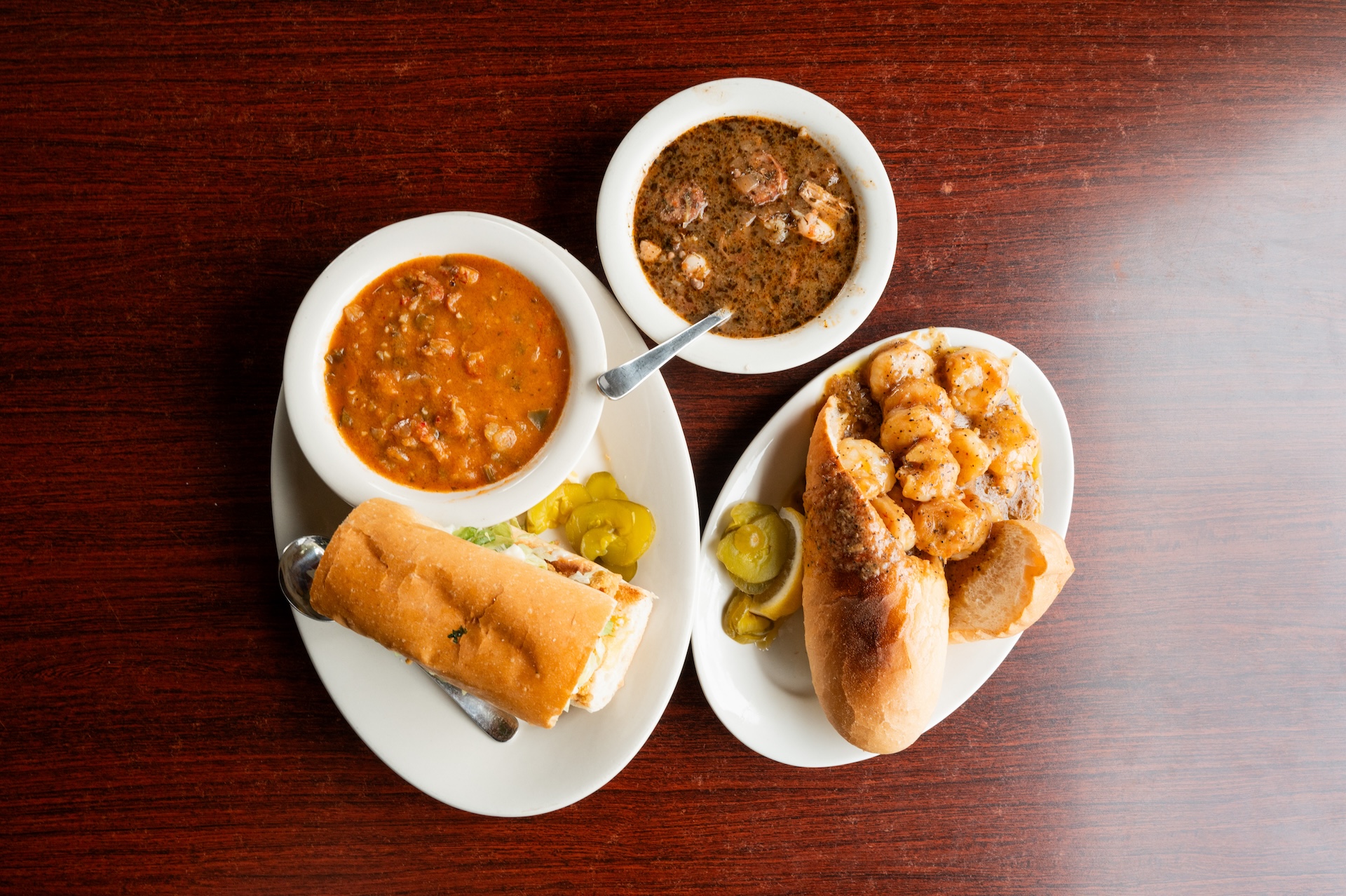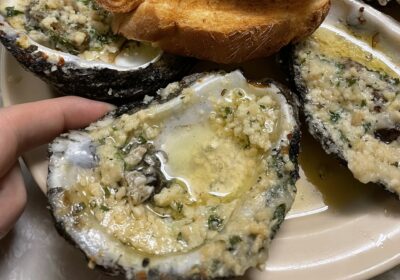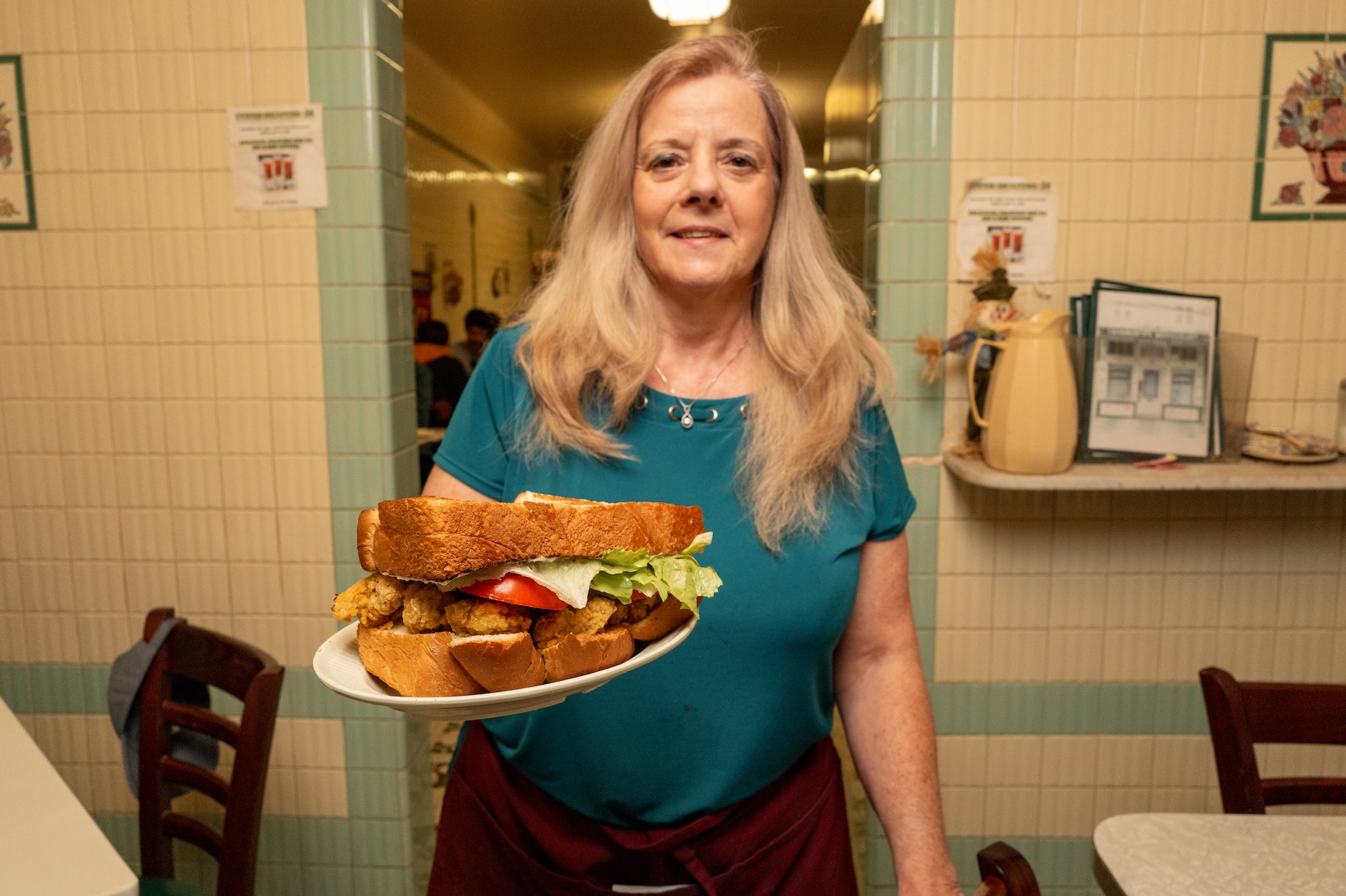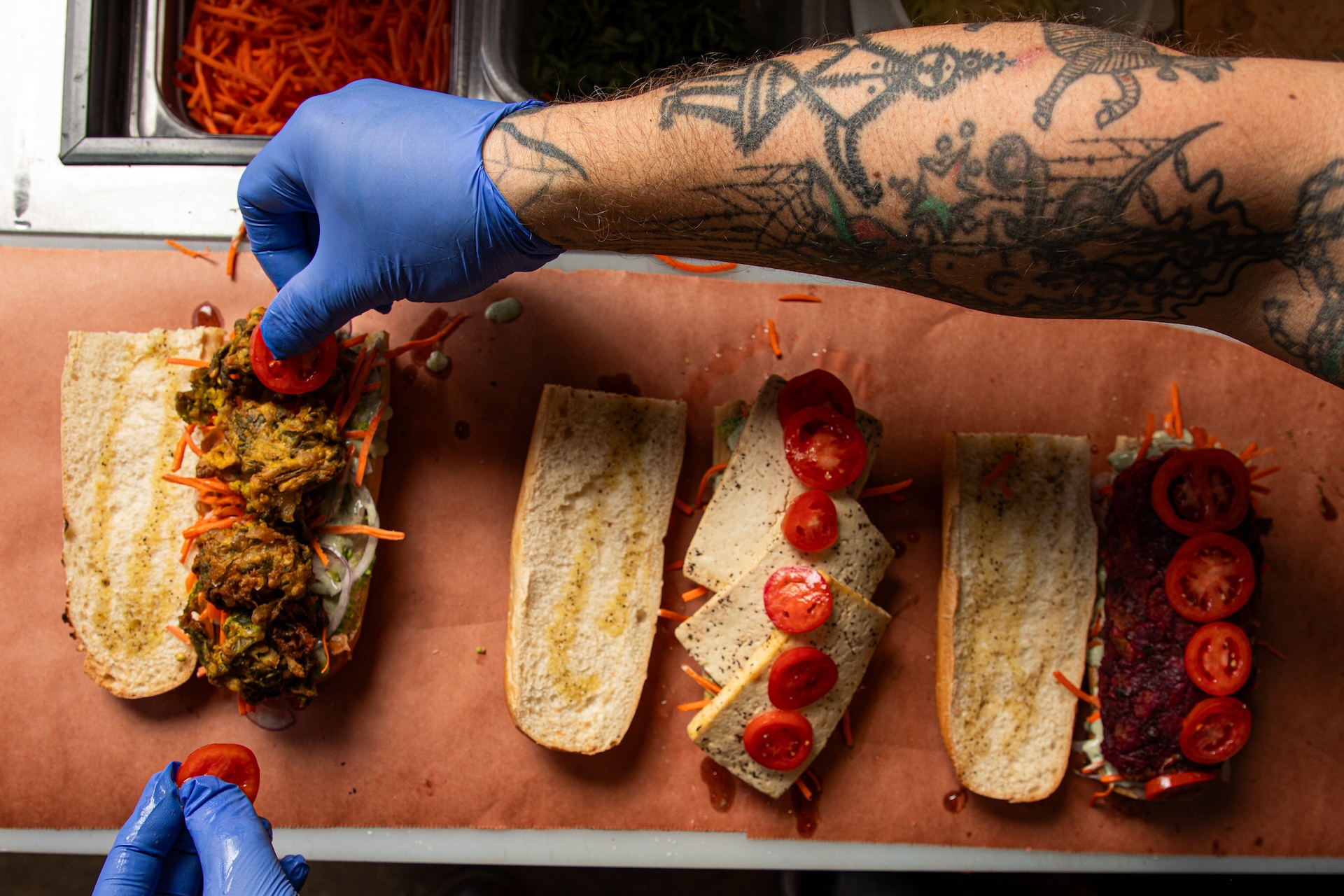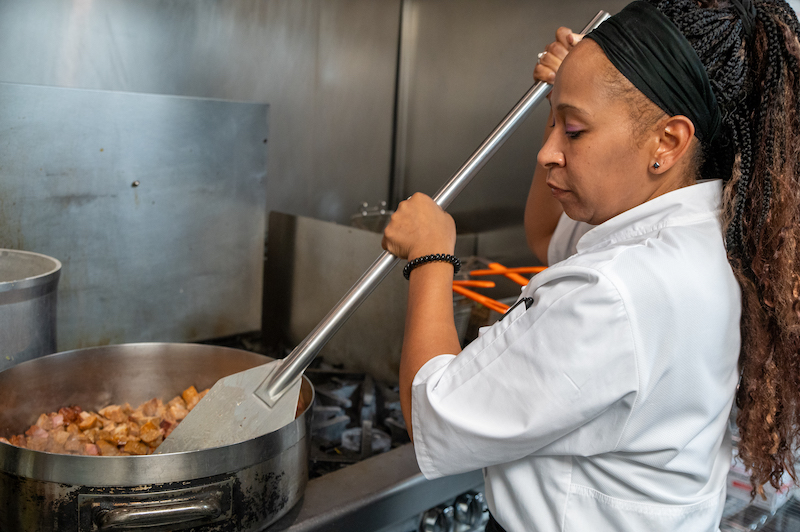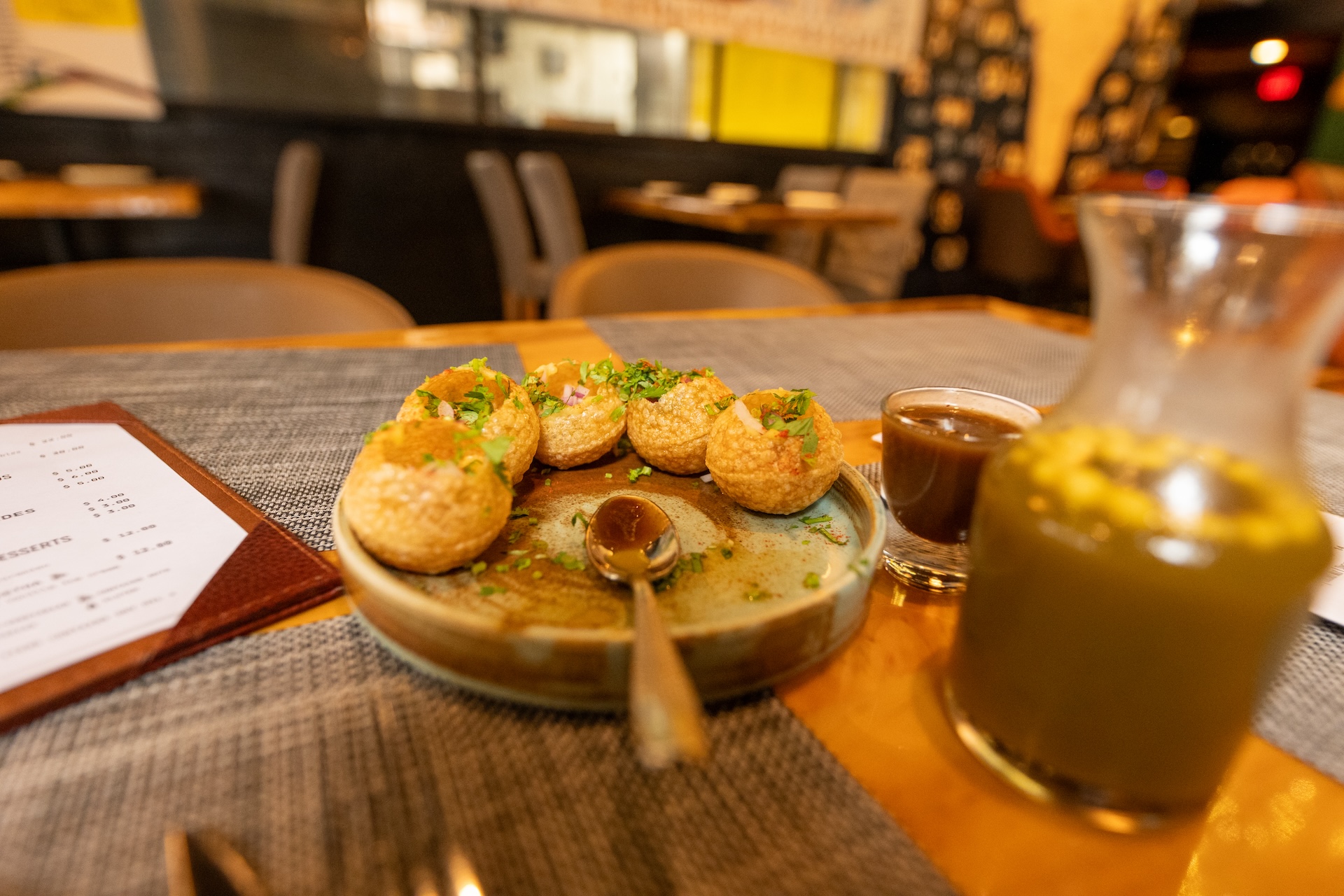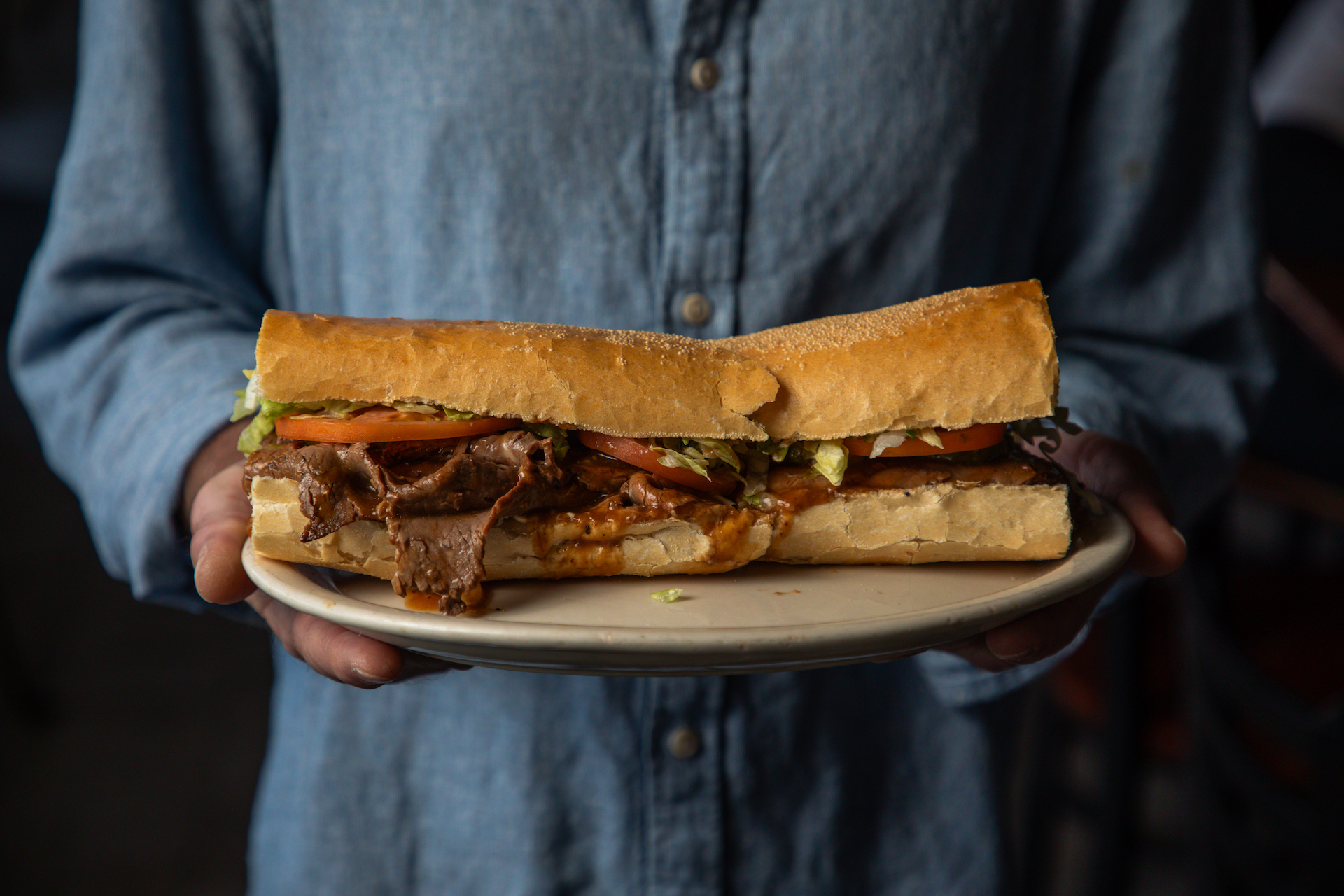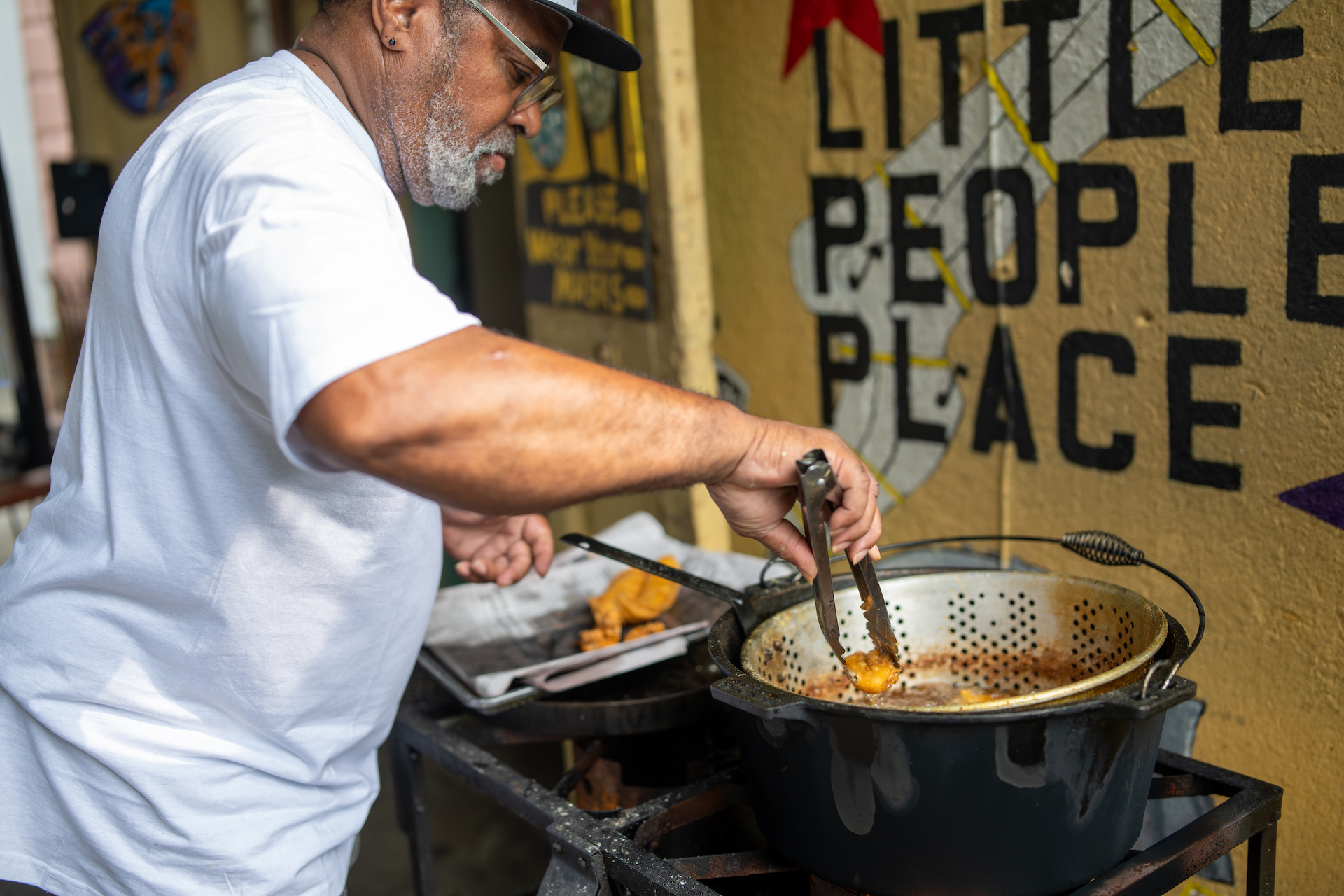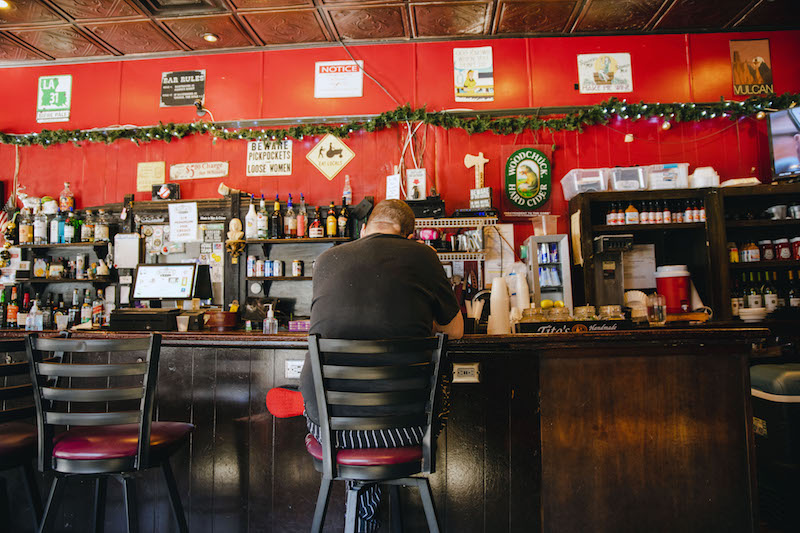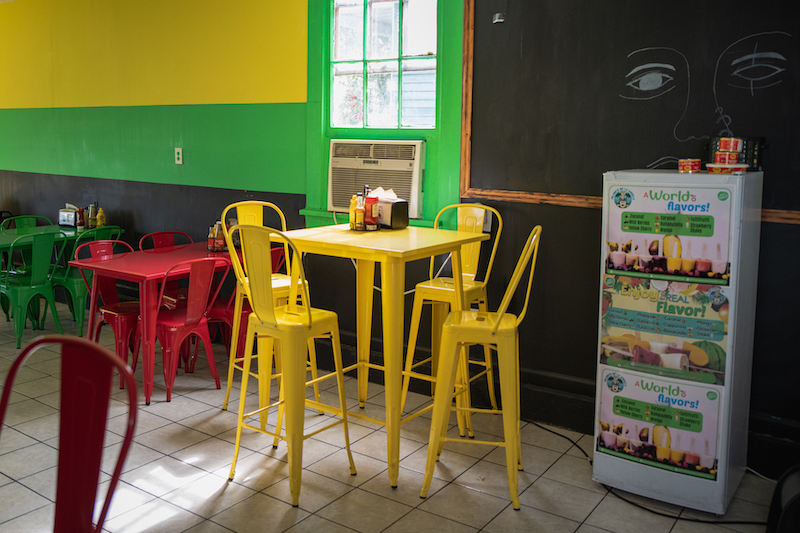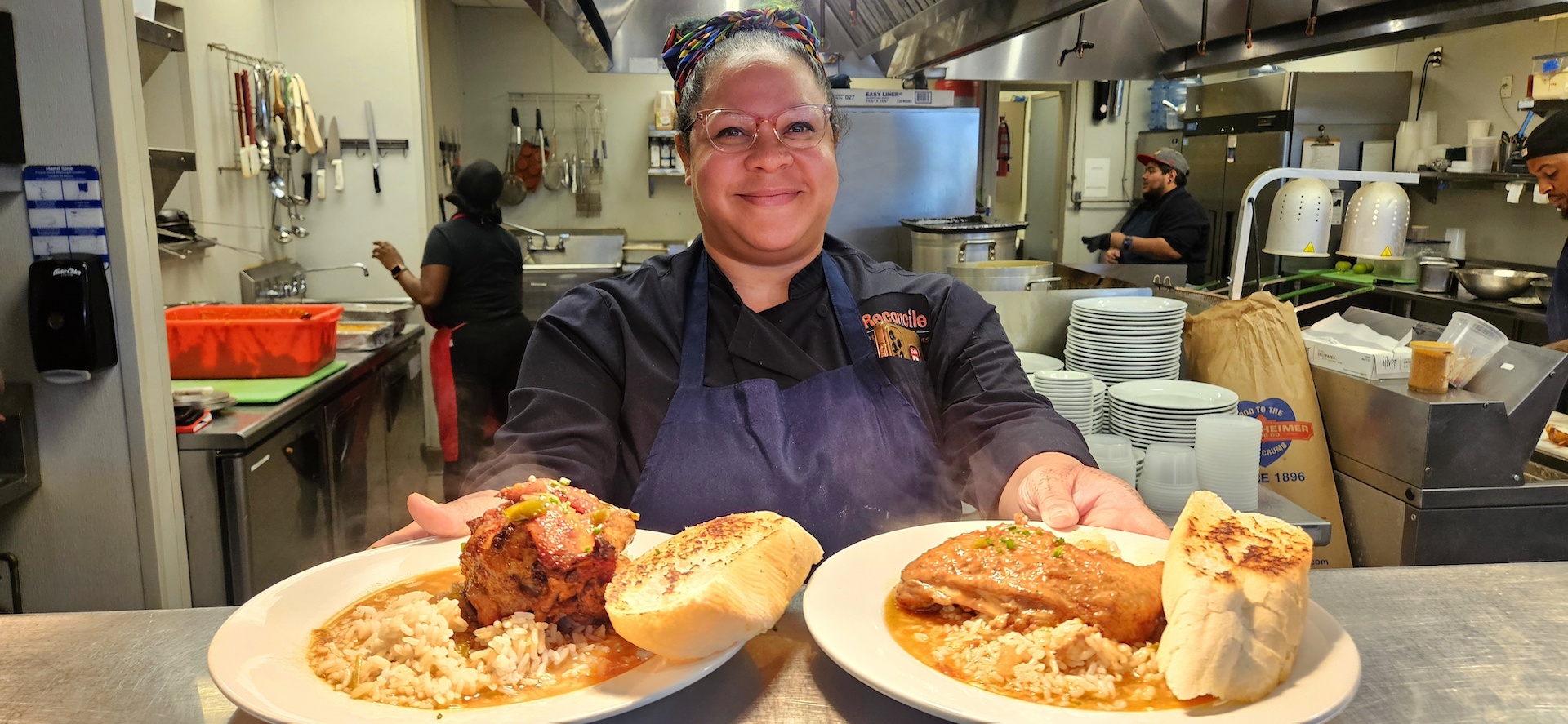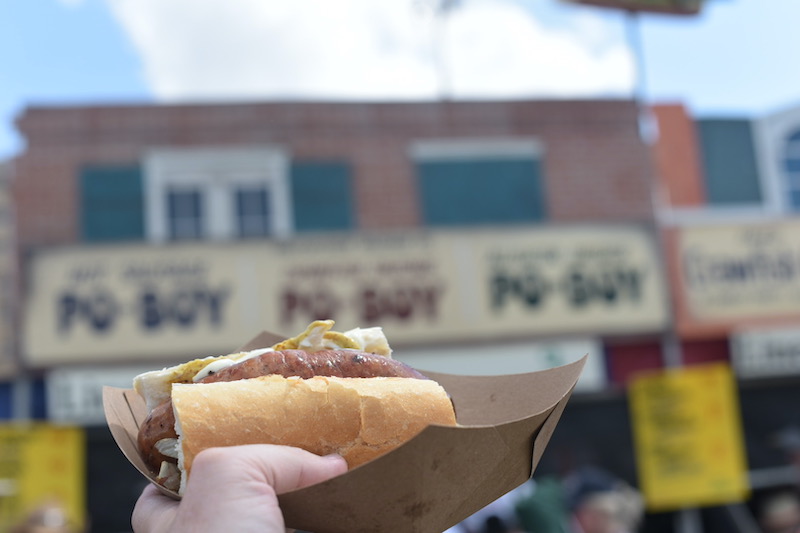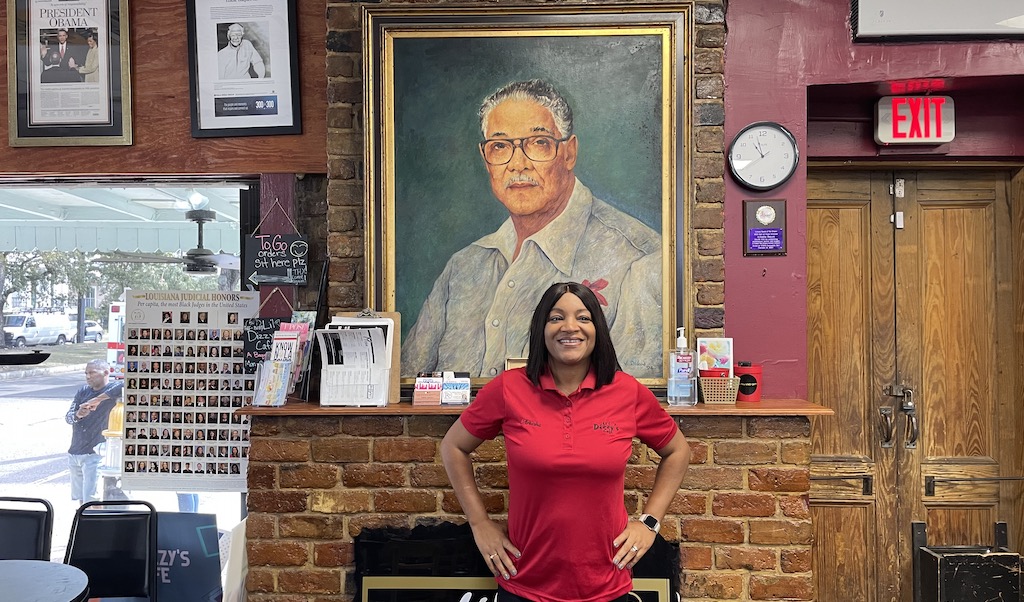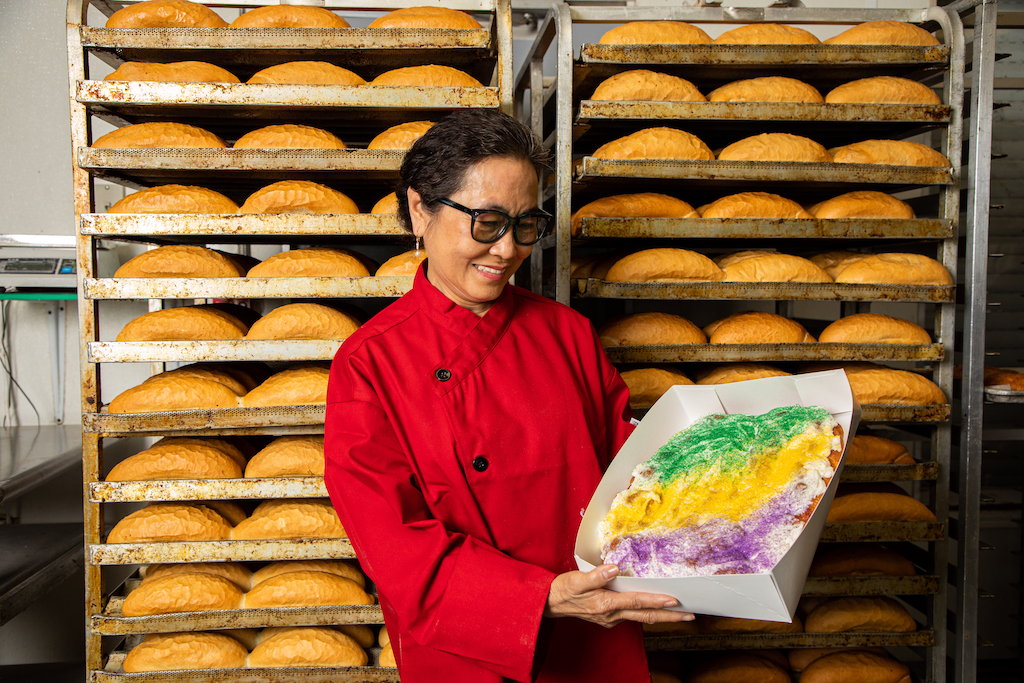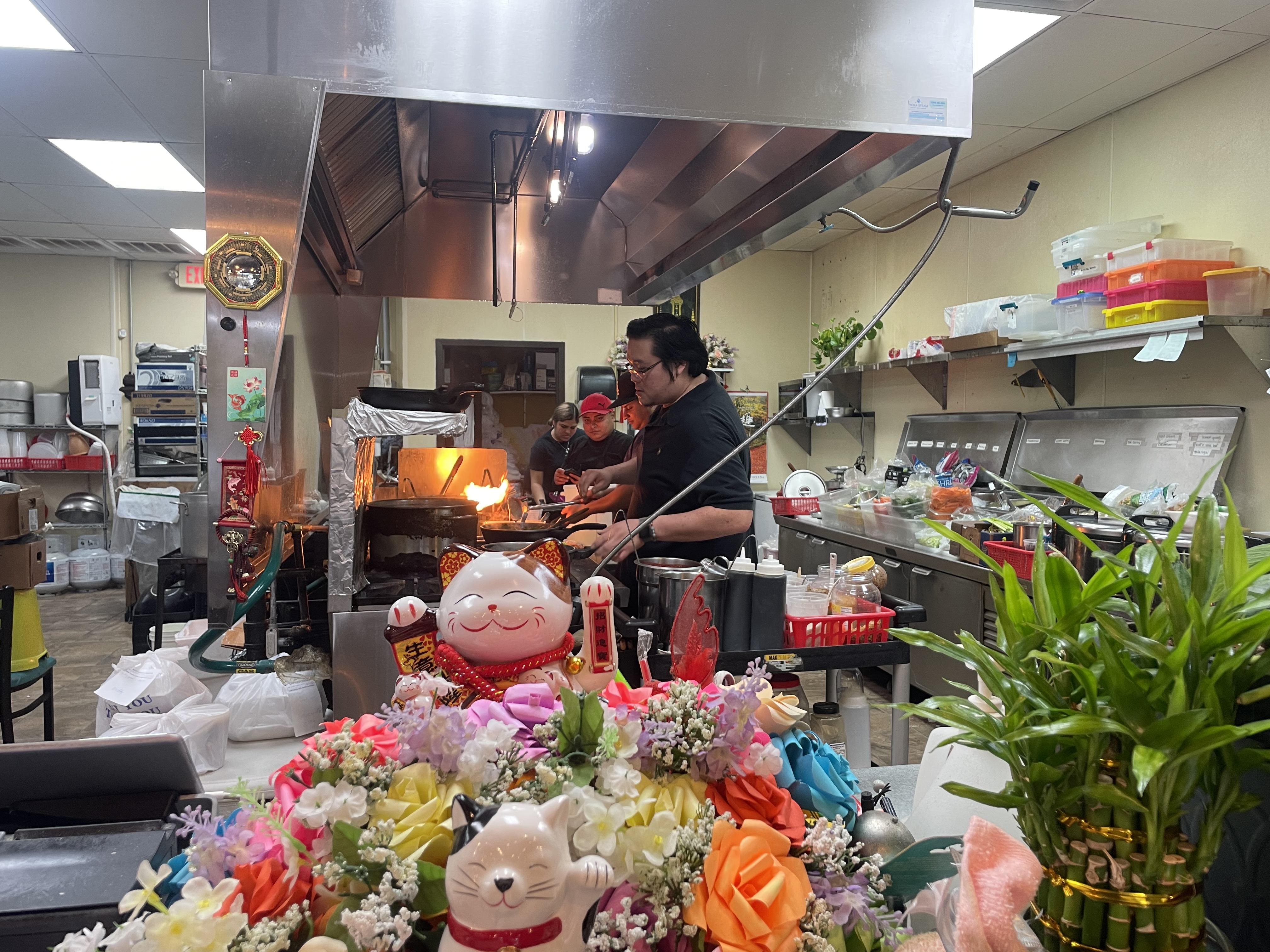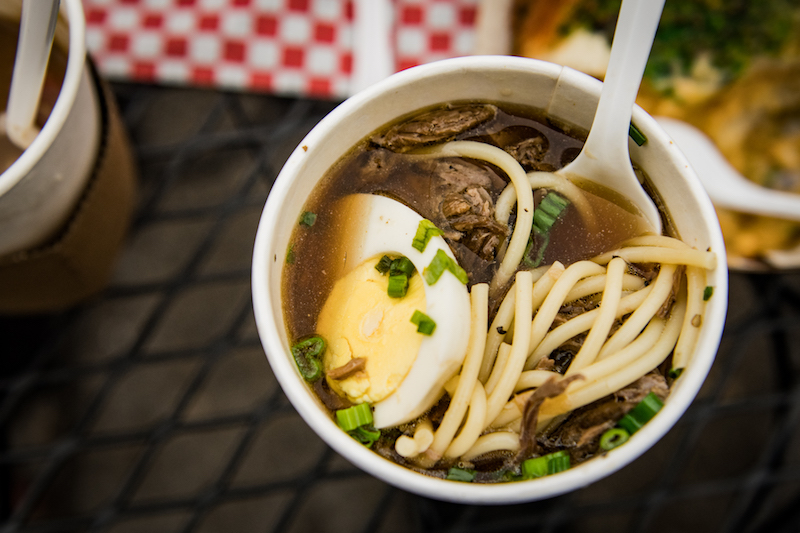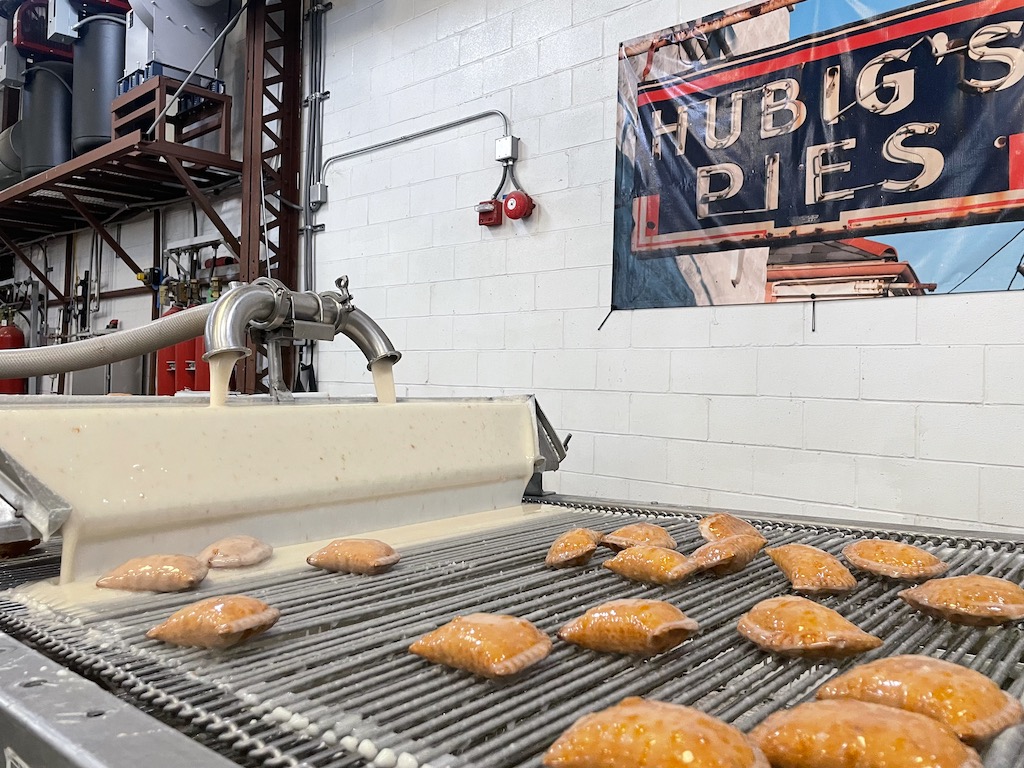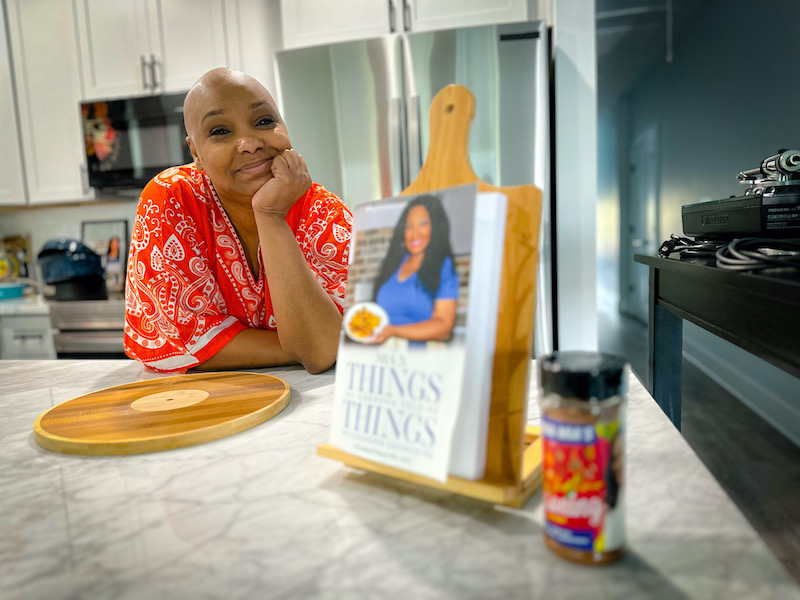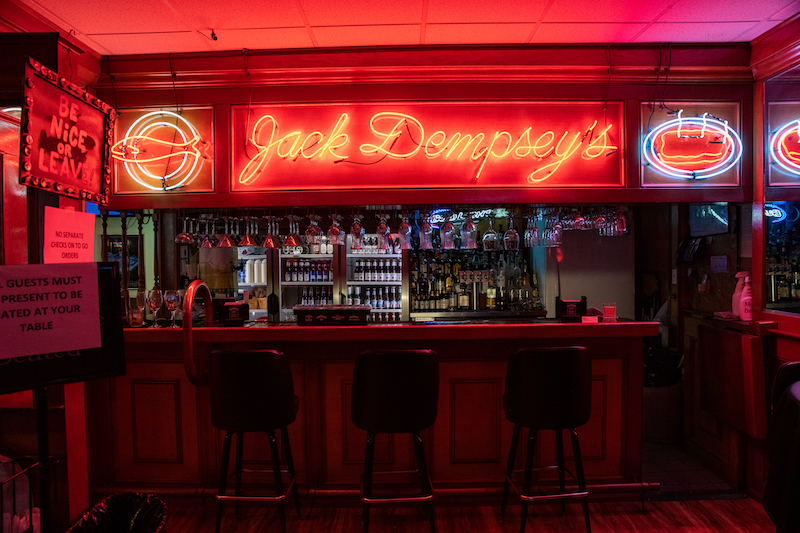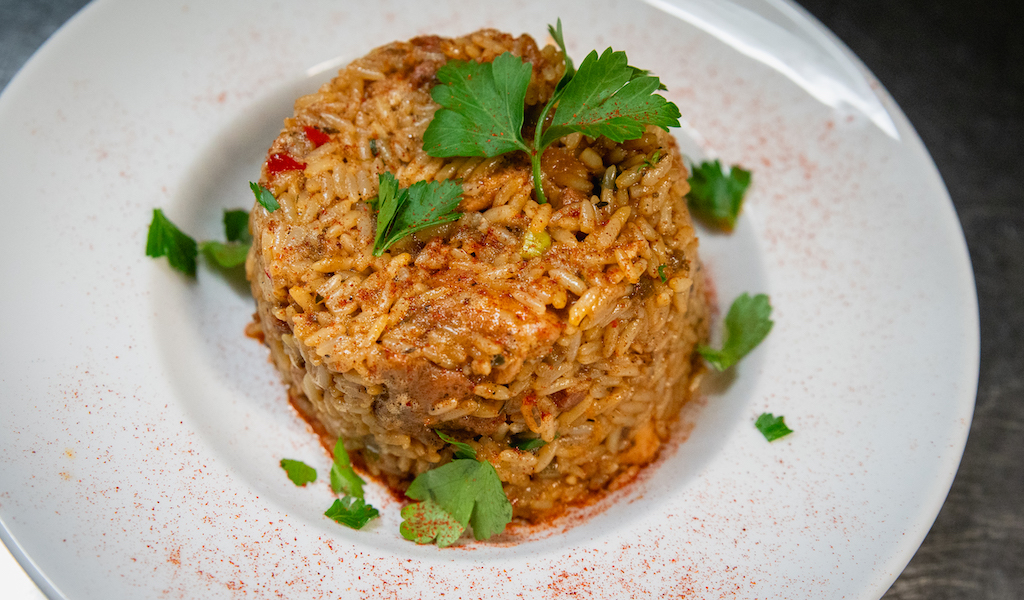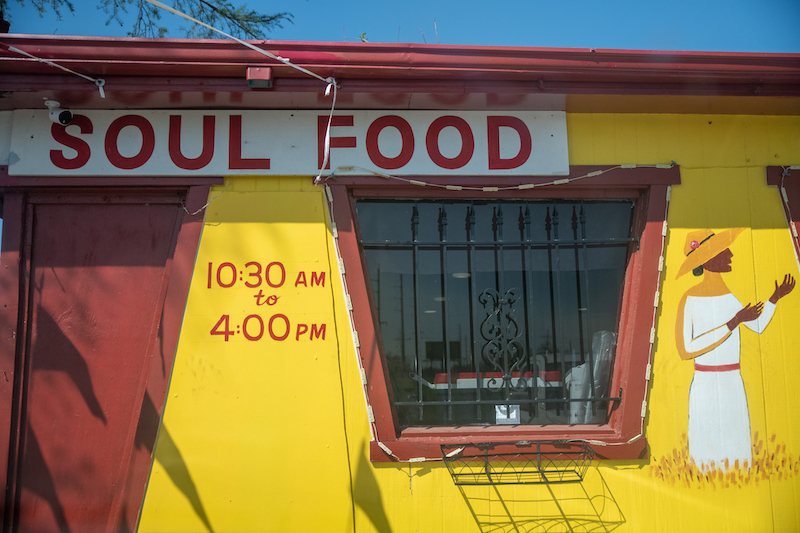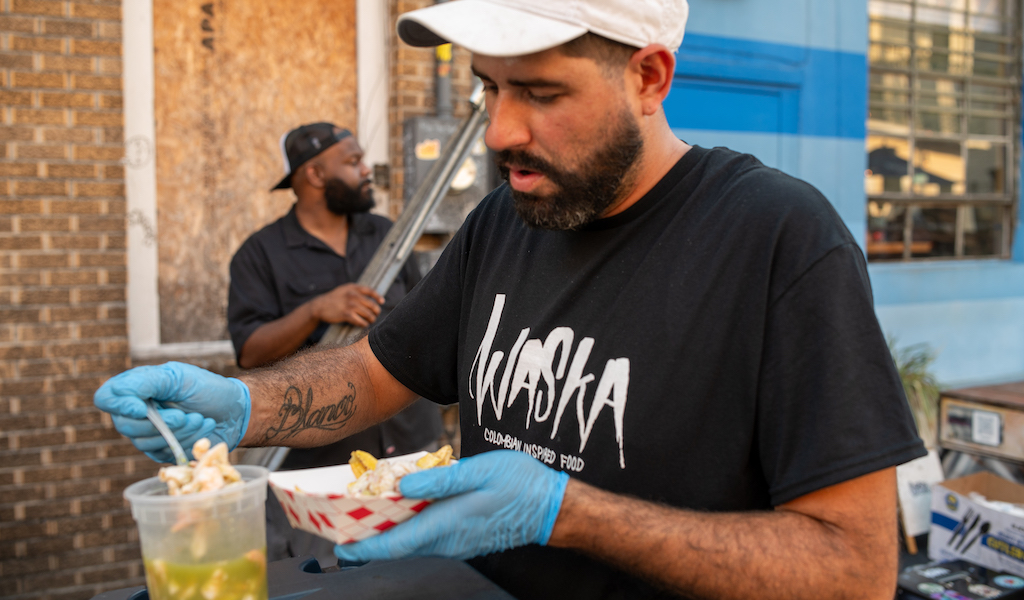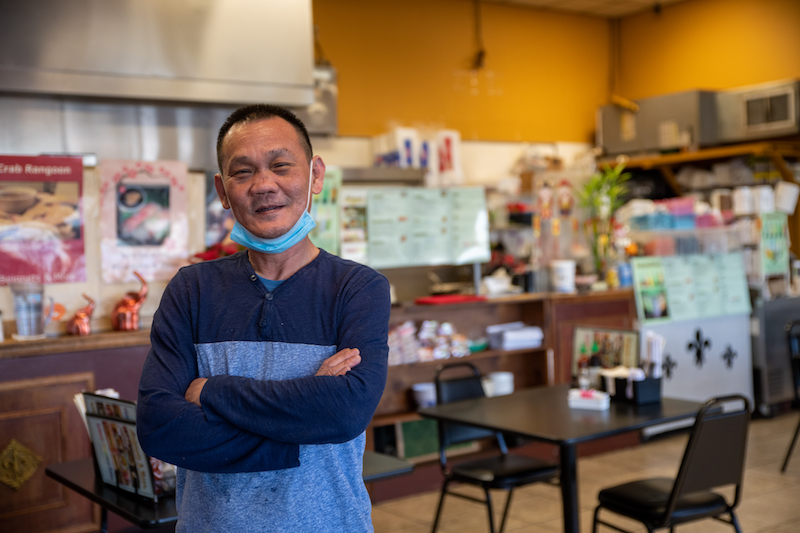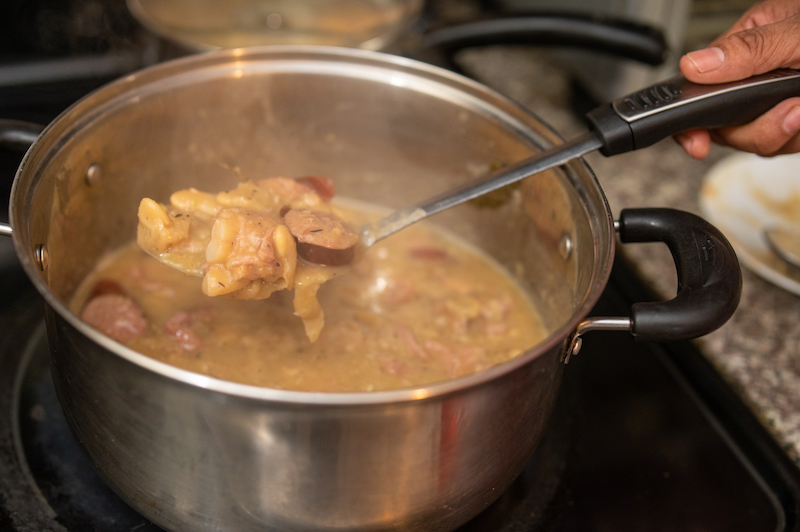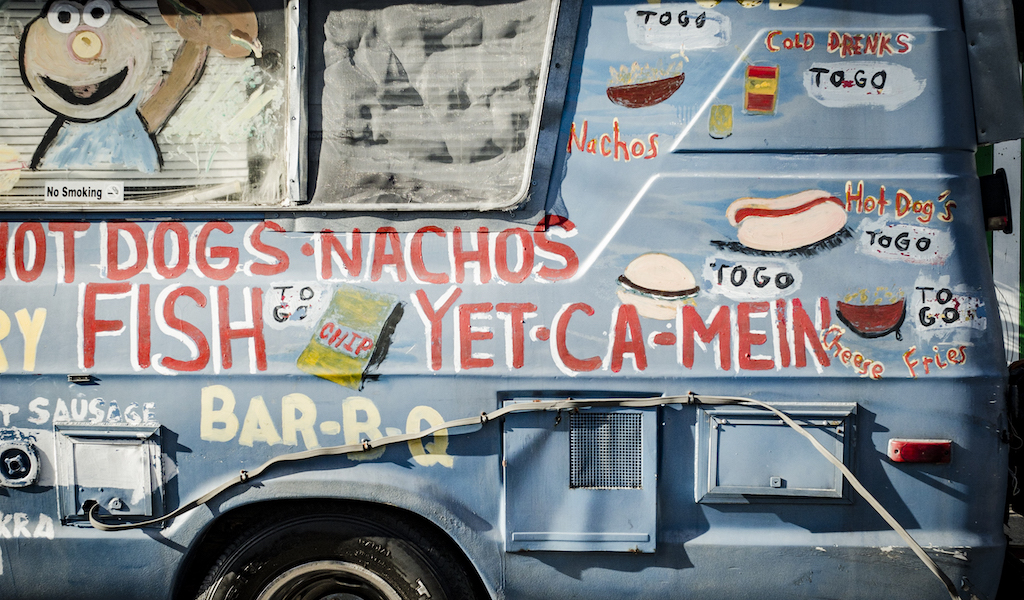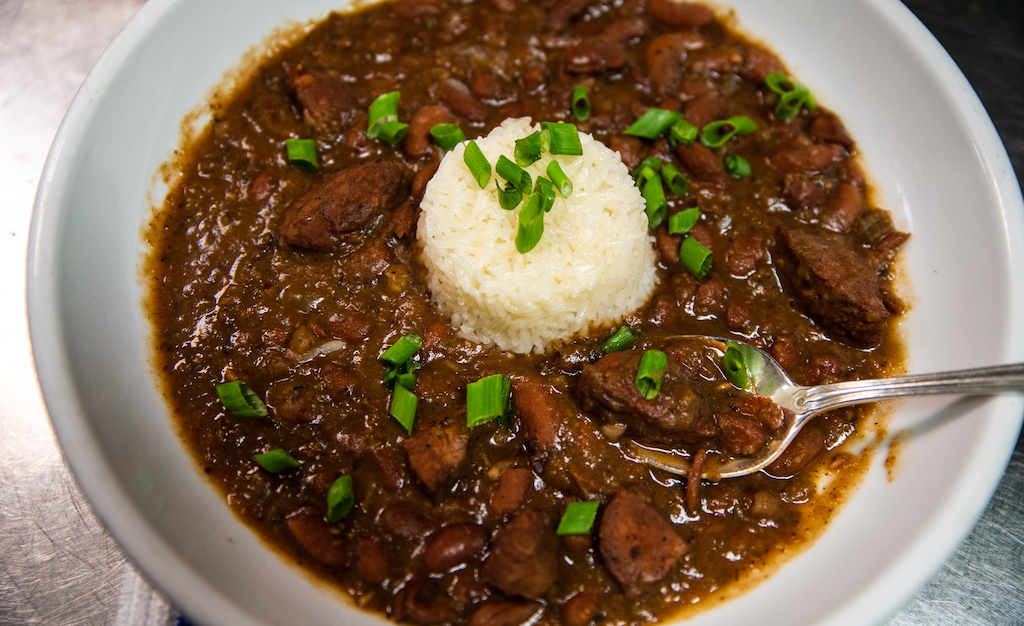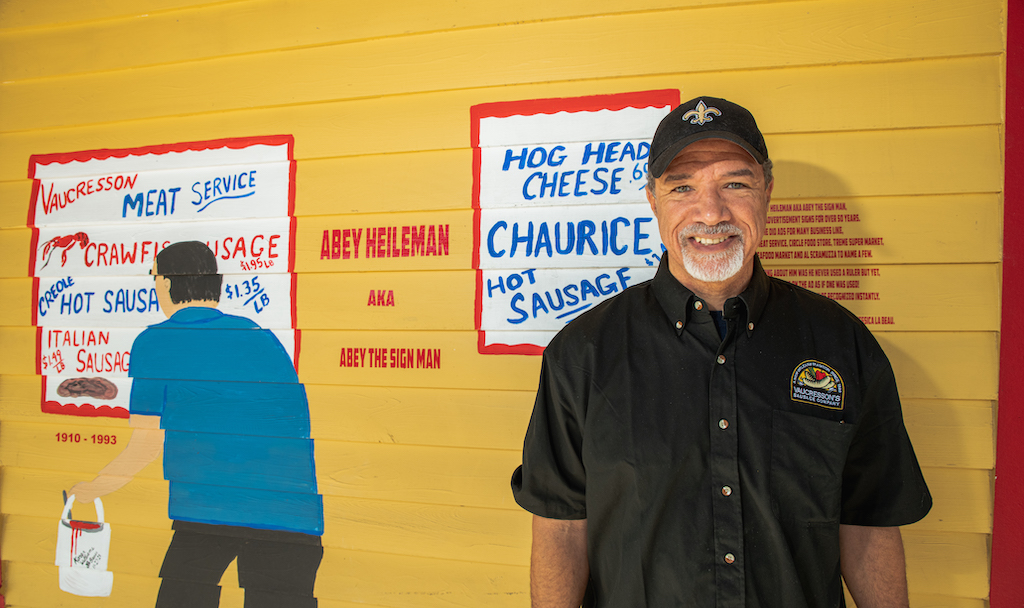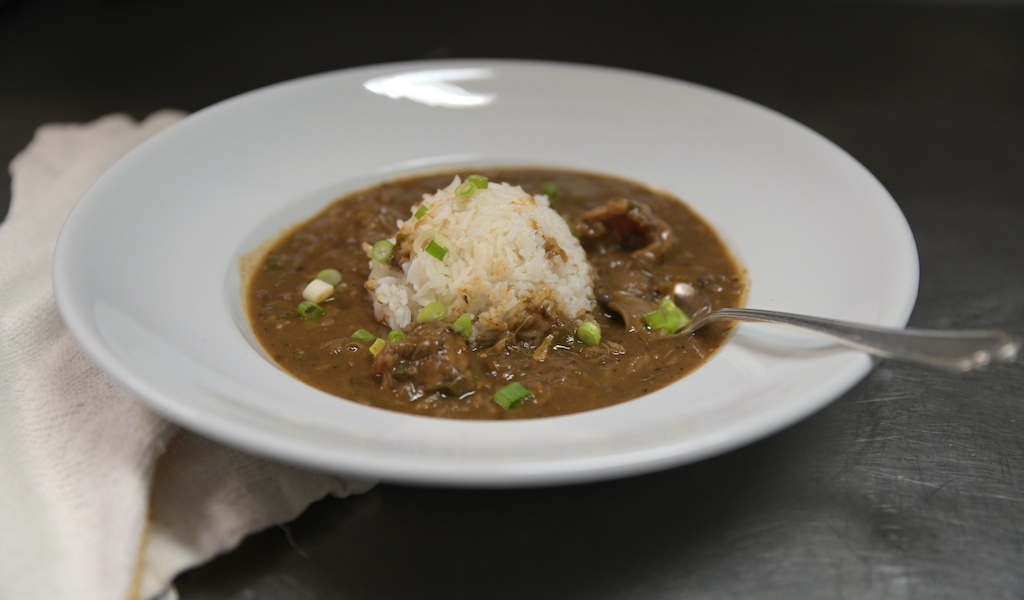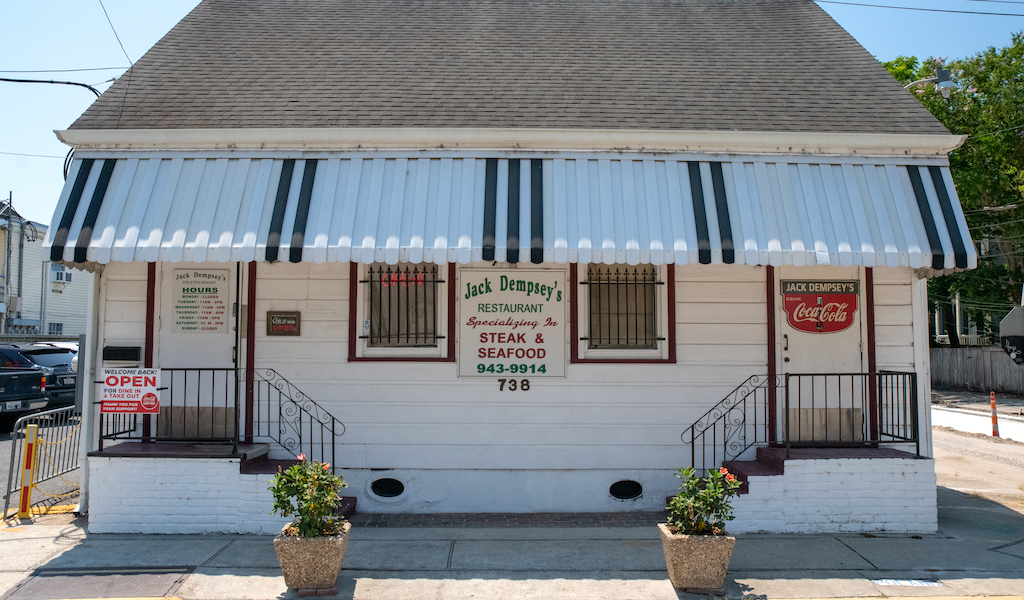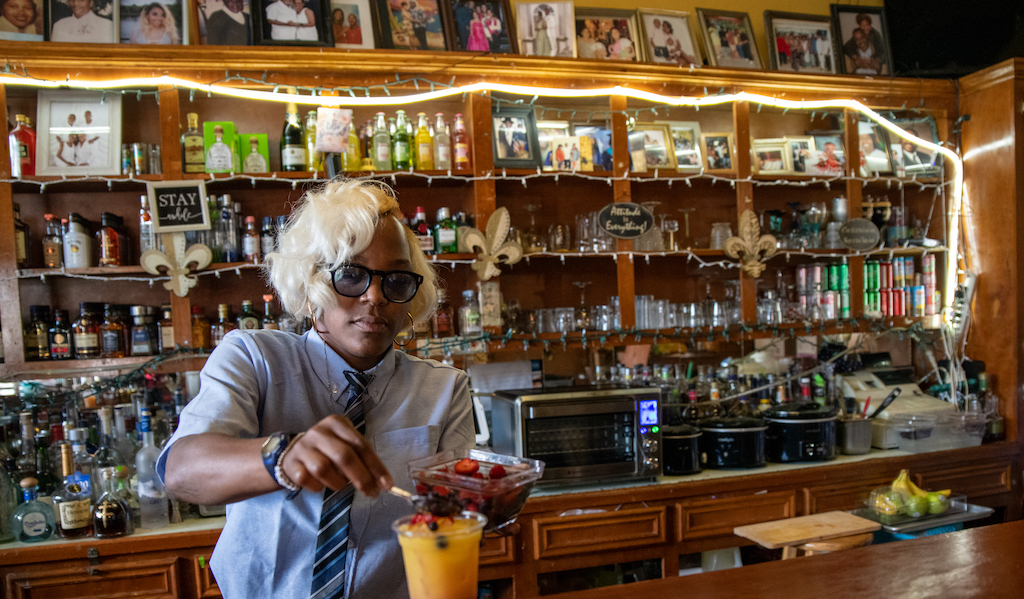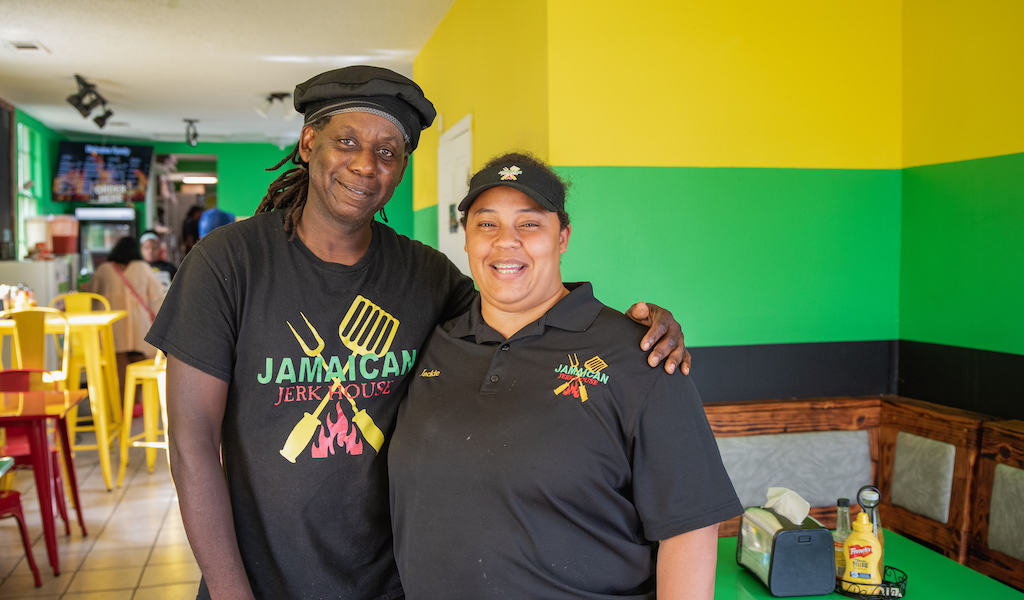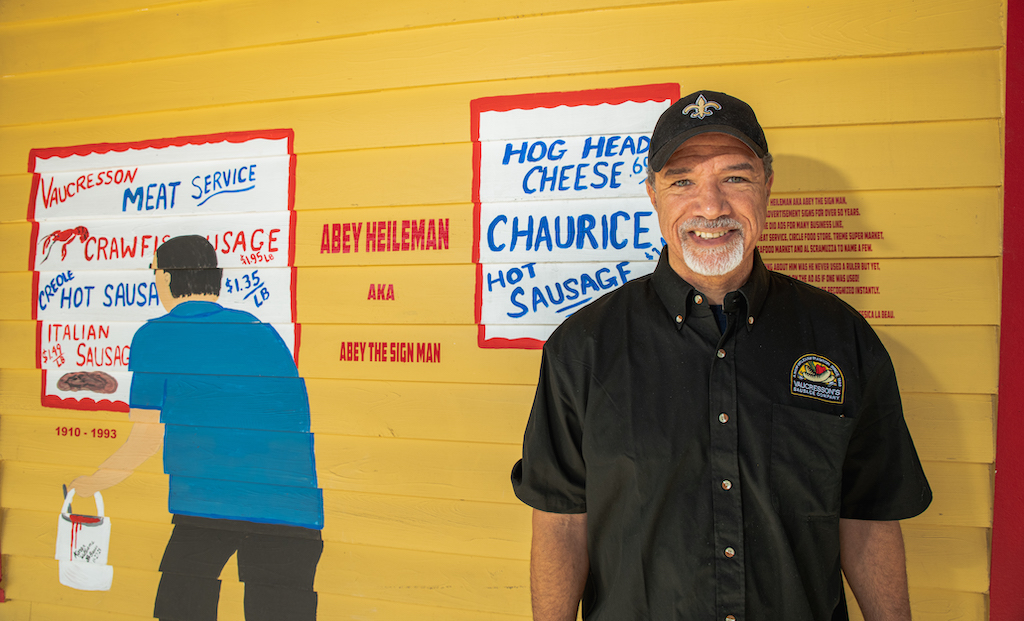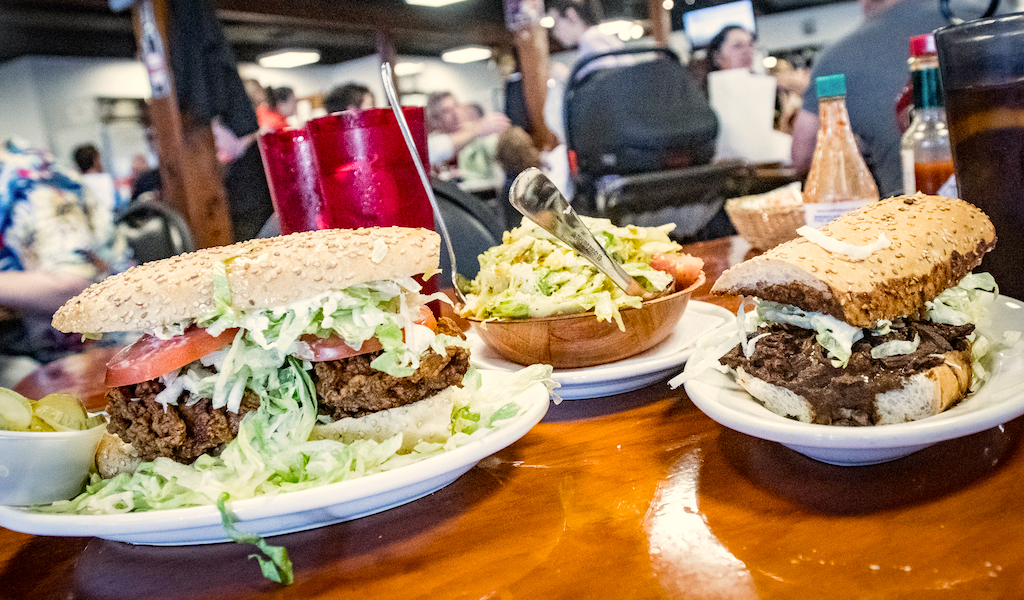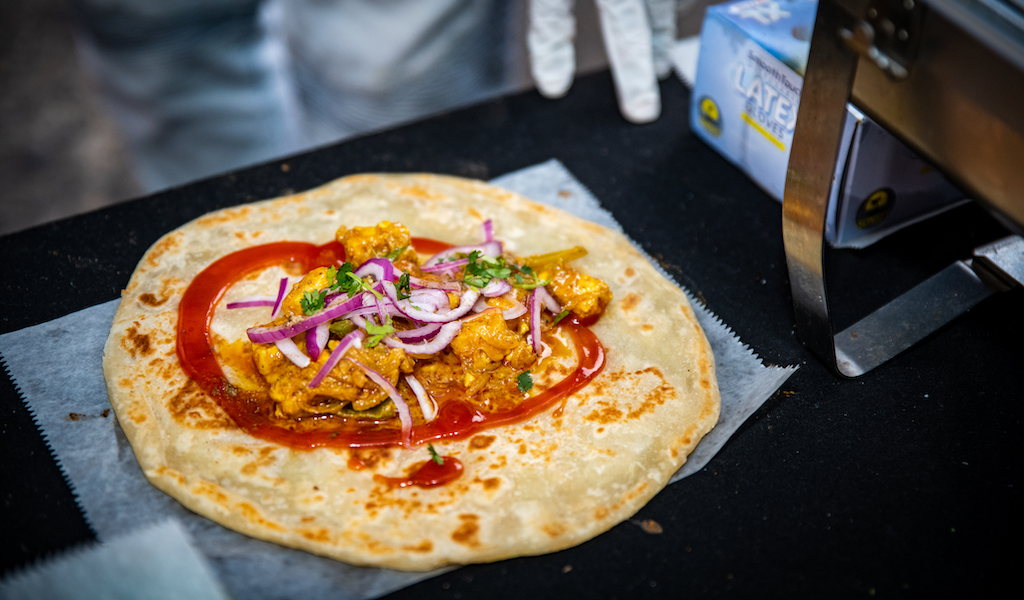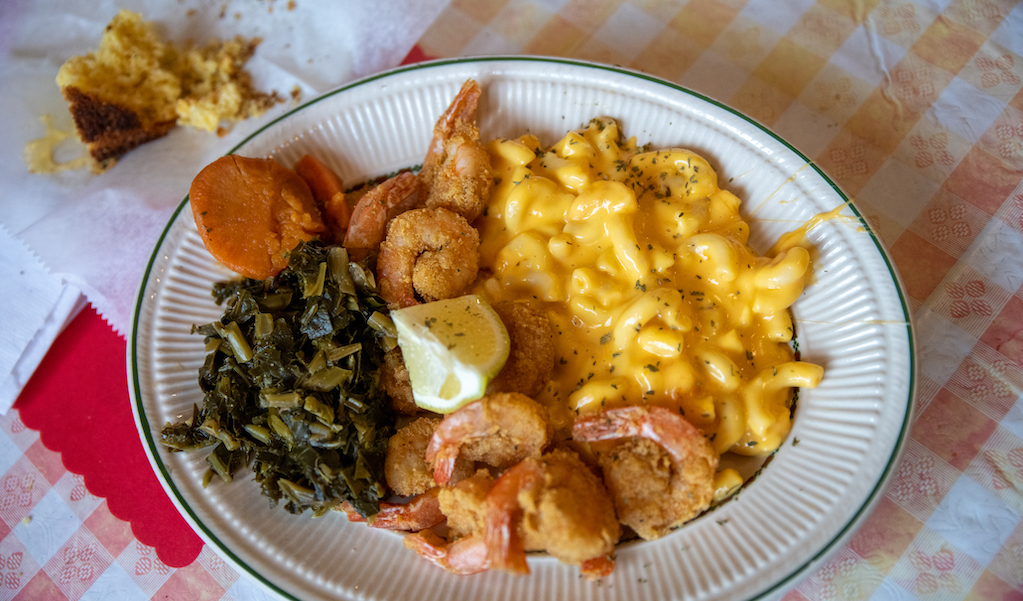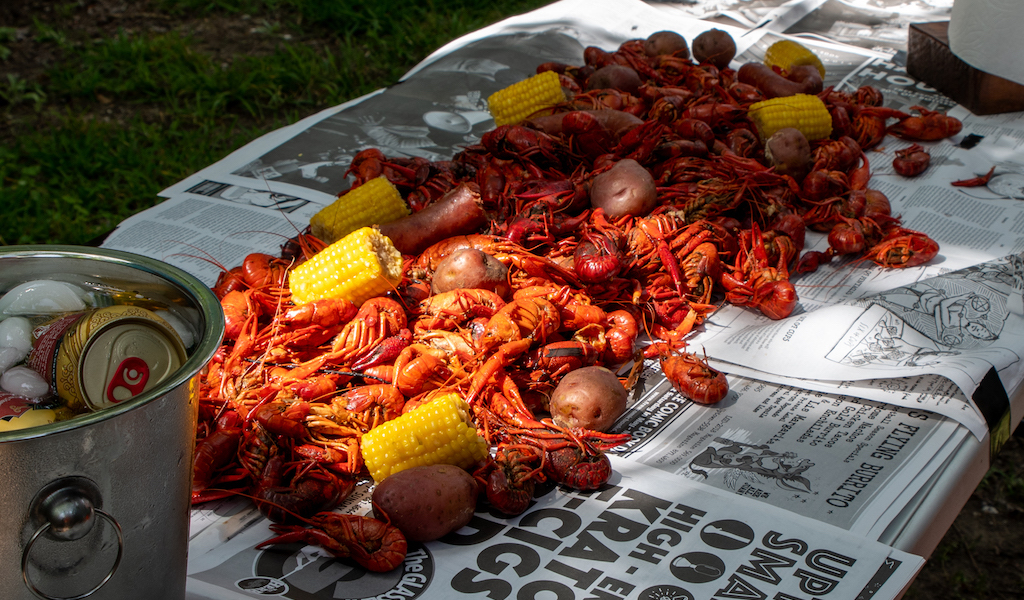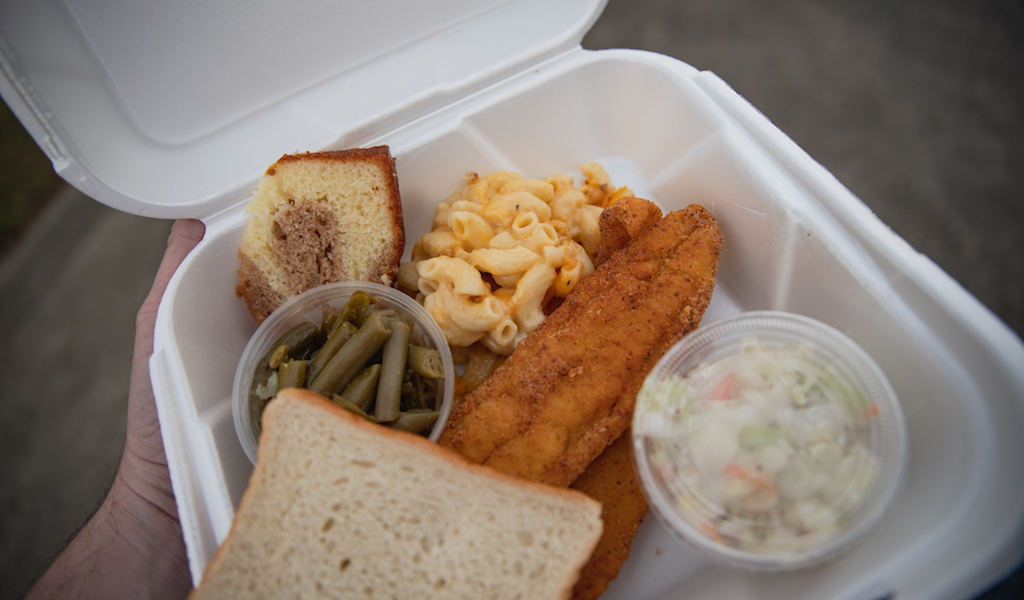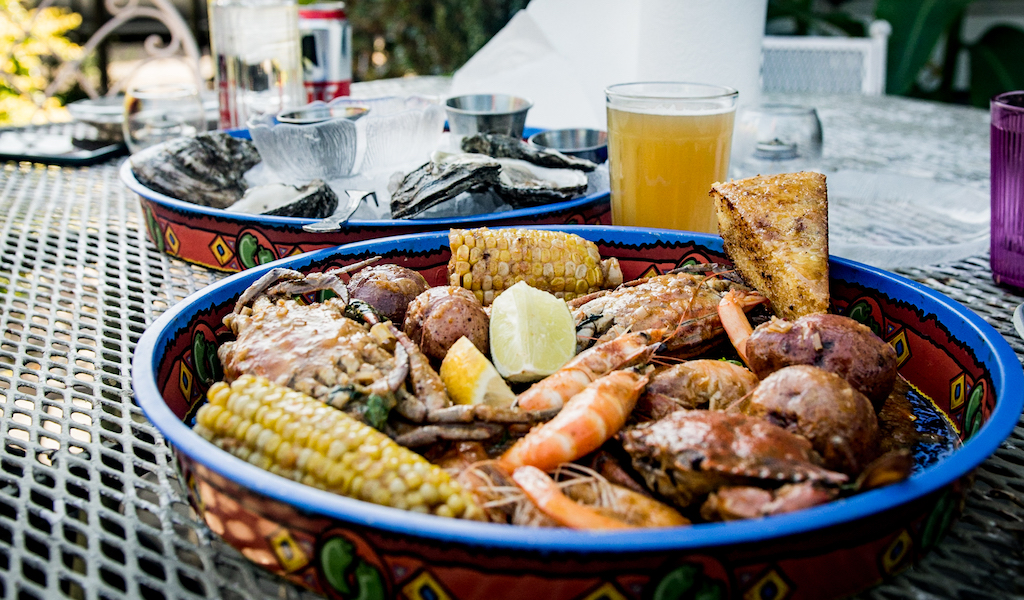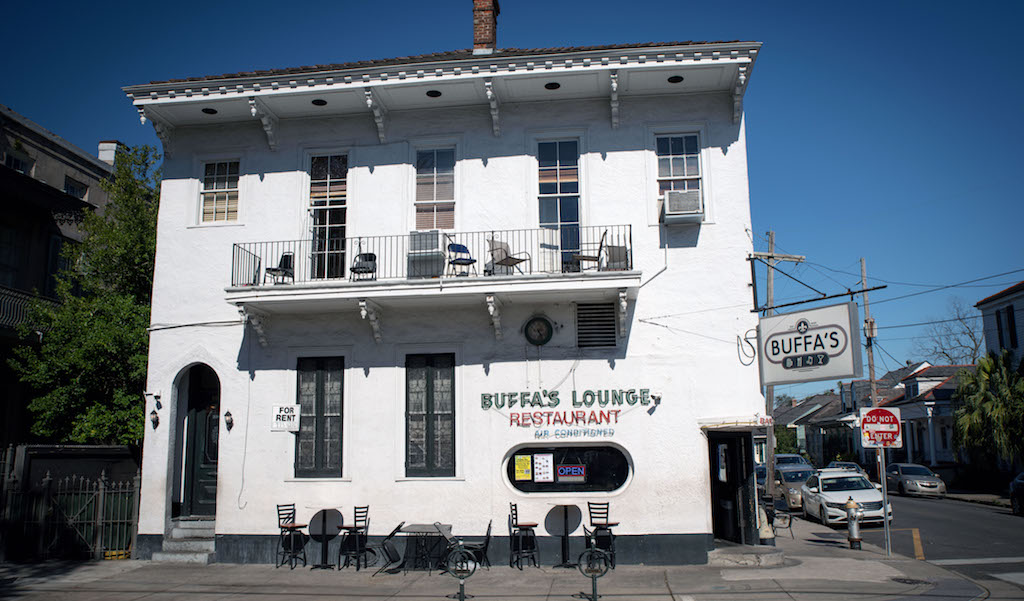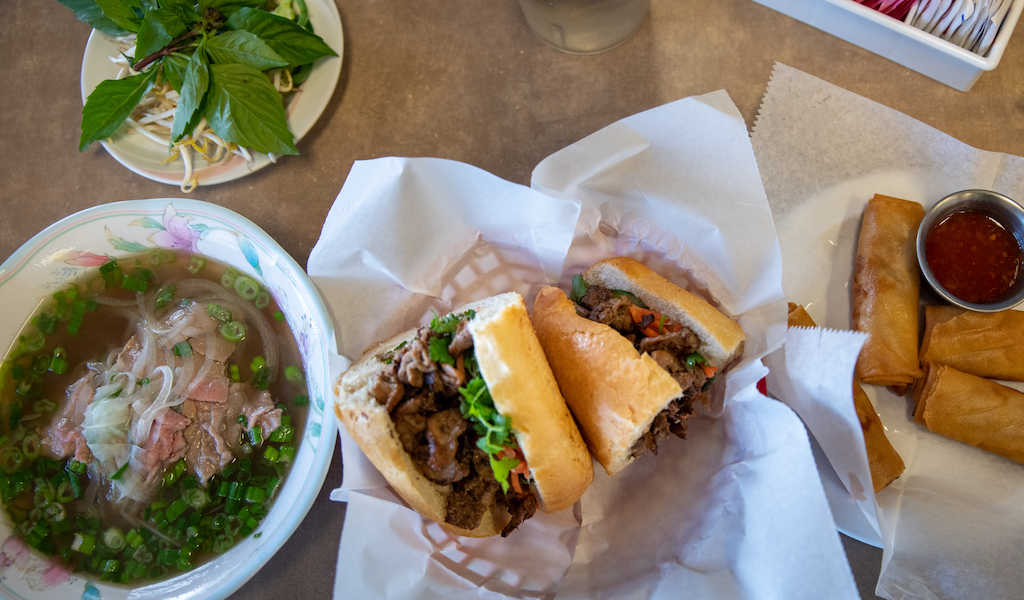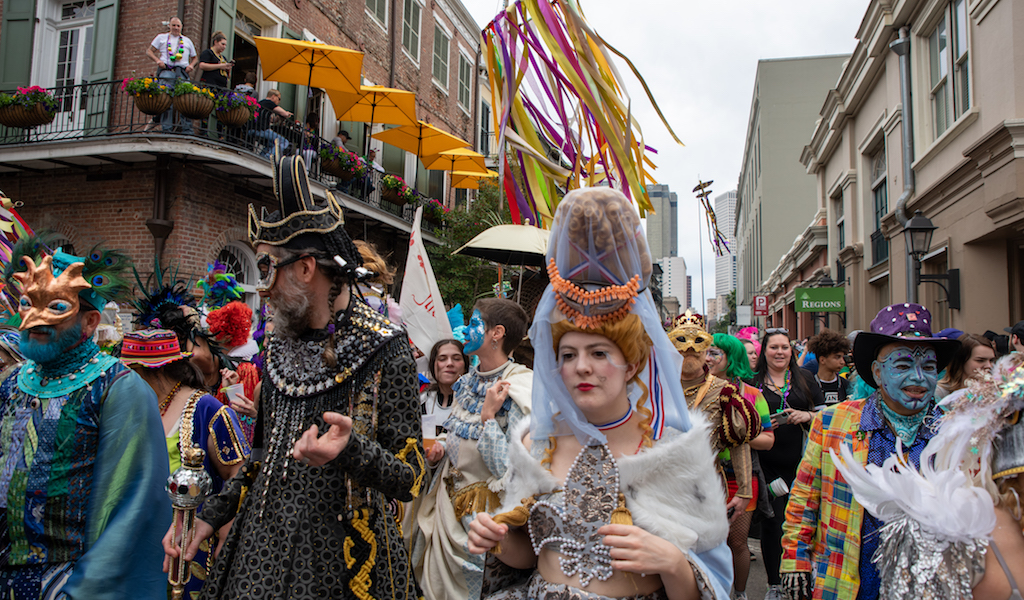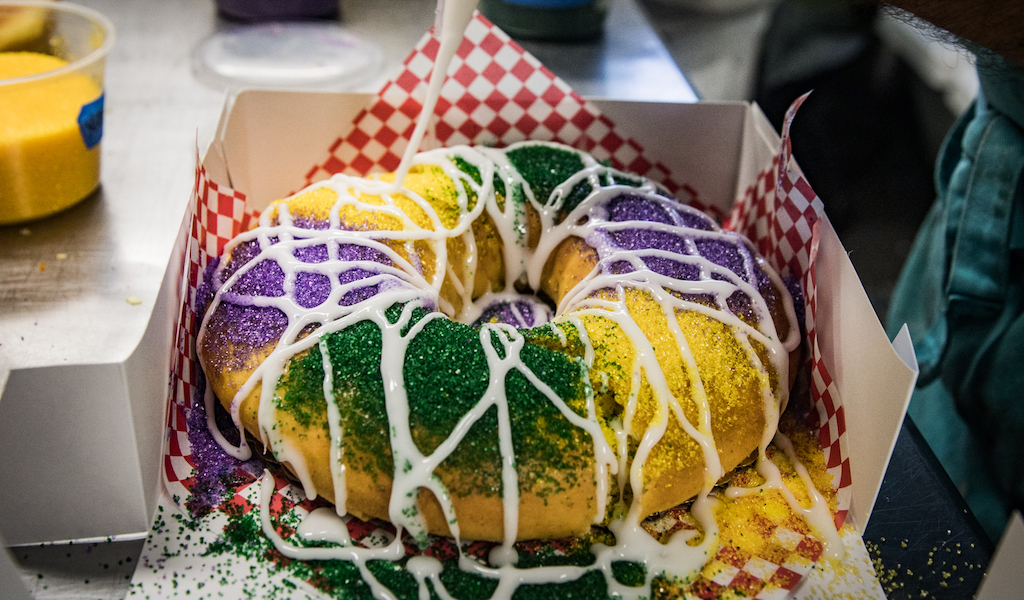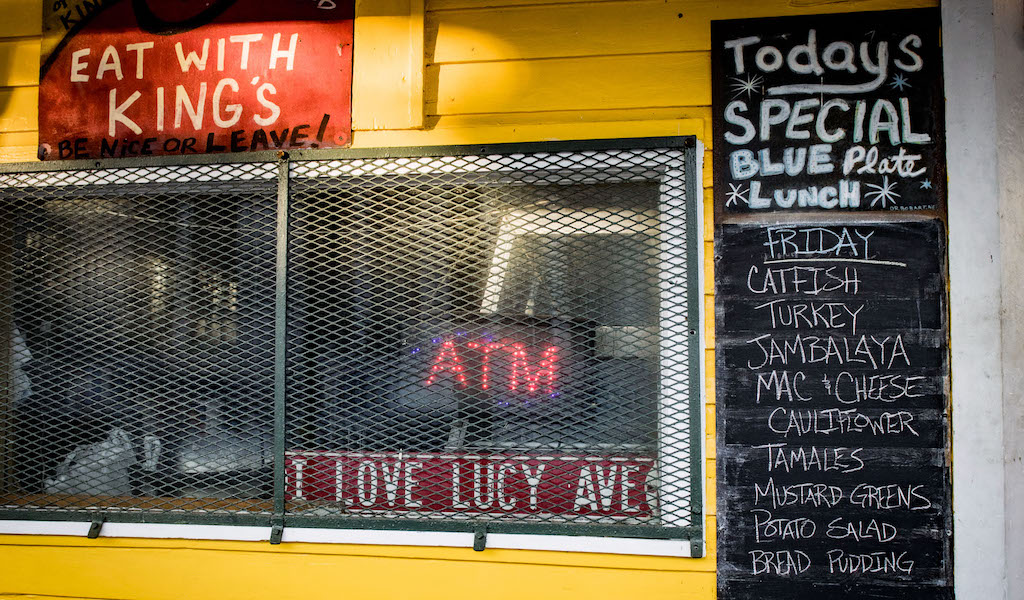We can't find the internet
Attempting to reconnect
Something went wrong!
Hang in there while we get back on track

New Orleans
New Orleans's culinary record
For a city of its size – tiny by contemporary American standards – New Orleans casts a very long shadow when it comes to things culinary. And when it comes to foodways and drinking culture, the city stands firm even as it playfully winks at you. It’s a series of living cultural stories that, like the hearty yet feather-light po’ boy, is well worth digging into.
Get the Full Story →Tour New Orleans with Culinary Backstreets®
Upcoming New Orleans Food Tours
discover the city, street by street, bite by bite
Explore New Orleans
New Orleans
The Essentials: Where We Eat in New Orleans, Louisiana
When it comes to where to eat in New Orleans, food is the primary language. A bowl of gumbo is not a recipe; it’s a novel of history, migration, and survival. This is a city that communicates its deepest truths – about joy, resilience, community, and conflict – through what it cooks. To eat here is to participate in a conversation that has been going on for 300 years. An essential New Orleans restaurant does more than serve a great meal. It provides a kind of spiritual and cultural nourishment, reminding the city of who it is, where it came from, and where it’s going. Our aim here is not simply to point you to good food, but to share with you places both close to our heart and our hope for the future of the city. They might not always be glamorous – the best booze can come in a plastic to-go cup and life-altering crawfish from a folding table in a parking lot. But they are all honest: neighborhood anchors, family legacies, or community hubs.
Read moreNew Orleans
Domilise’s: Po’boy Royalty
New Orleans is full of surprises, but the beauty of Domilise’s is that it’s exactly what you’d expect from a po’boy joint. Located uptown on Annunciation Street, the yellow house on the corner has been serving up food for the neighborhood along the Mississippi Riverbend for over a hundred years. We watch as customers line up below the hand-painted wood sign to get a taste of straightforward sustenance. There are no shortcuts here: tasty “debris” – the tender bits of meat that fall off a roast beef – are cooked for hours into gravy before Mary Lou and her team generously ladle it atop crisp loaves of Leidenheimer (a local brand of French bread that’s been around even longer than Domilise’s).
Read moreNew Orleans
Rocky & Carlo’s: Sicilian Success Story
In April 1965, Rocky Tommaseo and his brother, Tommy, teamed with Carlo Gioe and his two brothers, Mario and Giuseppe. Together, they opened Rocky & Carlo’s, a restaurant that would become an institution in Chalmette – a town about 10 miles east of New Orleans. But the partnership between these two families was already solidified by the time they arrived in southeastern Louisiana. “Our story began in Sicily,” said a younger Tommy Tommaseo, who everyone calls “Mr. Tommy.” He is the son of Rocky and nephew of the older Tommy. At 75 years old, Mr. Tommy is part of the second generation of Rocky & Carlo’s ownership. Two families merged, he said, in the coastal town of Alcamo.
Read moreNew Orleans
Frady’s: One-Stop Po’boy Shop
Kirk and Kerry, brother and sister, are the heart and soul of Frady’s One Stop Food Store, a Bywater neighborhood institution that has been around in some shape or form since 1889. After a typically busy lunch rush, the duo sit at a table outside the yellow-painted shop, watching over their quiet corner of New Orleans. They shout hello to an older neighbor as he totters by. Kerry notices his limp and asks Kirk about it.
Read moreNew Orleans
Fit For Mardi Gras: New Orleans’s Most Creative King Cakes
New Orleans’s king cake is a culinary symbol of Mardi Gras and the festive, months-long lead-up known as Carnival season. Beginning on January 6 and continuing until the season’s culmination on Fat Tuesday – this year taking place on March 4 – revelers across the region enjoy slice after slice of this traditional, cinnamon-flavored cake. Whoever finds the small, plastic baby figurine hidden inside is said to receive good luck, but must also purchase the next king cake.
Read moreNew Orleans
First Stop: Ian McNulty’s New Orleans
I know it sounds like a cliché – New Orleans and gumbo – but no other dish so genuinely represents the food culture and the food love of this city. It’s a dish you’ll find on countless menus, from the most upscale to backstreet joints. You will also find it in most New Orleans homes. It’s the dish we make at Thanksgiving and at Christmas. It’s the dish we make when it gets cold and we need comfort food and the dish we make when we have company over and we want to give them a taste of New Orleans. So eating gumbo, a really good gumbo, at a restaurant is a very true New Orleans experience. As a visitor, you are doing exactly what locals do.
Read moreNew Orleans
Best Bites 2024: New Orleans
In New Orleans, everything is rich… the soil, the architecture, the music, the revelry, as well as the food. Ignatius J. Reilly, the city’s great fictitious antihero in John Kennedy Toole’s novel A Confederacy of Dunces, reflected, “When I go to lunch, I must have something substantial. This business of having a light lunch is a thoroughly alien concept to me. My being recoils at the thought of a salad or any other such abomination. I am a medievalist, not a Calvinist. Lunch must be rich, satisfying, and caloric to sustain me through the afternoon.” When we went out for a New Orleans meal over this past year, we heeded the words of Ignatius. It's best you do the same. - Lev Thibodeaux
Read moreNew Orleans
Casamento’s: Oyster Oasis
Casamento’s does not accept reservations, credit cards, or checks. Simply walk under the restaurant’s green neon sign and through the white door and you instantly know you’ve entered a special place, somewhere between Italy and Louisiana; the interior a cross between a shotgun house and the bottom of a public pool. The narrow series of rooms, lined from floor to ceiling in imported tiles, leads in a straight line from the front door to the bathroom in the back of the kitchen. The seafood joint makes for a physical, communal experience, an offer of what was and what remains in New Orleans. Don’t worry, you are in good hands.
Read moreNew Orleans
Small Mart: Pakora and Po’Boys
Looking at the menu at Small Mart Cafe, it can be hard to make sense of the variety. First there are the bagels, led by the “New Yorker,” filled with smoked salmon, tomato, onion, capers, and cream cheese. Soon, you’ll come to the curry and chaat bowls, leaning into the flavors of India and Pakistan and including sides like samosas and crispy pakoras. Near the bottom of the menu, you’ll find po’boys – this is New Orleans, after all. The local sandwiches traditionally are filled with proteins like fried shrimp, oysters, or roast beef. At Small Mart, however, tradition isn’t much of a constraint.
Read moreNew Orleans
Fall Recipes: Jambalaya, a Staple of the (Football) Season
Jambalaya, the rice dish that stands at the crossroads of culture and cuisine, is a staple of celebration, mourning and everything in between in Louisiana. From tailgates to Mardi Gras to repasts and backyard cookouts, it is a ubiquitous food that can be a main or a side dish. The roots of the dish can be traced to West African jollof rice, as well as Spanish paella. At its essence, jambalaya is an odds-and-ends dish that feeds a multitude, a humble rice dish with some meat and/or seafood cooked into it by way of a flavorful broth. As for the origins of the name jambalaya, there are as many theories as the grains of rice contained within. Some believe it to come from the Provençal word jambalaia, which means a mishmash.
Read moreNew Orleans
LUFU NOLA: Pop-up Finds a Permanent Home
The tall French doors and brightly colored murals that greet you upon entering LUFU NOLA are a dramatic departure from its early days as a pop-up restaurant, when Chefs Sarthak Samantray and Aman Kota were dishing out their regional Indian fare at bars and breweries across the city. The sleek, modern bar and simple, elegant dining room echo the themes of arrival, as what was once an itinerant restaurant has found a home in New Orleans’s Central Business District. And the surroundings aren’t the only thing that’s new for LUFU – a full-scale restaurant has allowed their team to showcase an even broader array of dishes that represent the culinary heritage of India.
Read moreNew Orleans
Sammy’s: Butcher at Heart
When you walk into Sammy’s Food Service & Deli at lunchtime, it might look like you’ve entered the scene of an emergency. The atmosphere is buzzing as a collection of police officers, firemen, and military personnel fill the modestly-sized dining area. “There are post office workers, too!” added Sammy Schloegel, who has co-owned this Gentilly eatery with his wife, Gina, since the early 1990s. “We give all government employees twenty percent off,” he laughed, “so that probably helps bring them in.”
Read moreNew Orleans
Little People’s Place: Fried Fish and Family
It’s Friday at Little People’s Place in the Tremé, and that means fried fish. Rodney Thomas carries a tray laden with freshly battered shrimp and catfish fillets out the bar door to his provisional fry station, a well-worn propane burner with a heavily seasoned cast-iron dutch oven on top. The oil inside the dutch oven begins to shimmer and circulate, and Thomas drops a pinch of the seasoned fish fry into the cauldron-like pot to see if the oil is hot enough. A quick sizzle confirms it is, and Thomas begins to nimbly slip the shrimp and catfish into the hot oil, which bubbles vigorously. A few feet away under the plywood awning that covers the entrance to the bar, a group of men are watching daytime television on a small flatscreen TV sitting on an outdoor table – today it’s Divorce Court – while slowly sipping beers.
Read moreNew Orleans
Buffa’s: Old Faithful
We all have that friend. A friend we should probably call more often. One who is always there for us, but we don’t see often enough. A friend who we can pick up where we left off with, no matter how much time has elapsed between conversations. A friend whose company always leaves you satisfied and wondering: Why didn’t we do this sooner? Buffa’s Bar and Restaurant is that friend. An outpost in the Marigny neighborhood on Esplanade Avenue, divided from the French Quarter by a neutral ground (which is New Orleanian for “street median”). A few blocks away, the classic dive bar Port of Call draws tourists and locals in a line that stretches around the block for their potent drinks and hearty burgers.
Read moreNew Orleans
Jamaican Jerk House: Bringing the Heat
New Orleans is arguably one of the most Afro-Caribbean cities in the United States. In the minds of some, we don’t even qualify as a US city, but rather the northernmost outpost of the Caribbean. From our architecture to our food and our rhythms, we sit apart from the rest of the South. We love spice and deep flavors, cooking that is evocative of people and place. Jamaican food would seem like a natural fit here, and it is, though it is not nearly as commonplace as it should be, all things considered. But Richard Rose and his wife Jackie Diaz are looking to change that with their new Upper 9th Ward restaurant on St. Claude Avenue, Jamaican Jerk House.
Read moreNew Orleans
Cafe Reconcile: More than a Meal
“Our collard greens are from scratch and are delicious. Our red beans are really good. Our gumbo is great. The fried chicken is a standout. And our catfish – you can get it fried, grilled, or blackened – it’s so good, we could basically just be a catfish place and satisfy a lot of our regulars.” That’s Martha Wiggins, two-time James Beard Foundation Award semifinalist and Executive Chef at Cafe Reconcile, when asked to describe what her loyal following of regulars most frequently order at her lunchtime-only restaurant.
Read moreNew Orleans
Vaucresson’s Sausage Company: Historical Links
The blistering April – yes April – sun in New Orleans is an indicator of two things: climate change and the start of festival season. In other parts of the country, warm days and cool nights and the gradual bloom of trees and flowers define spring. But in Southeast Louisiana, spring seems to supernova into summer overnight despite what the calendar claims; nothing is subtle here. And under this hot sun, one of the stalwarts of festival season, Vaucresson’s Sausage Company, led by owner Vance Vaucresson, sells its hot sausage po’ boy to legions of adoring fans. Vaucresson’s has been at the New Orleans Jazz and Heritage Festival for fifty years and is the only original vendor still there.
Read moreNew Orleans
Lil’ Dizzy’s: Creole Soul
Don’t be fooled by the name of Lil’ Dizzy’s Cafe. There’s no coffee, and in fact, the iconic establishment feels more like an auntie’s overstuffed living room than a café. Situated in the heart of Tremé, the oldest African-American neighborhood in America, Dizzy’s is crammed with family paintings and inauguration memorabilia for President Barack Obama, with signed jerseys of retired Saints football players dotting above the doorway. The celebration of community is the norm in New Orleans. And Dizzy’s is an exemplar of this – purer than the sugarcane used in its sweet tea. Customers stream in – men in suits, others in shorts, cops, families, out-of-towners, mailmen and more as soon as the clock hits 11 a.m. The door unlocks, and Dizzy’s staff begin to shout out “Welcome to Dizzy’s” to first-timers and “Hey, baby! How ya doing?” to regulars.
Read moreNew Orleans
Dong Phuong Bakery: From Outskirts to Institution
“It sometimes feels like a dream to me,” explained Linh Garza, president of Dong Phuong Bakery, “that a small family of Vietnamese refugees could create all of this.” What began as a small family bakery is now a New Orleans institution, honored with an America’s Classics award by the James Beard Foundation. And, despite the fact that it can take as long as 30 minutes to drive to Dong Phuong from the heart of the city, hundreds of locals and tourists line up along Chef Menteur Highway every day during the weeks leading up to Mardi Gras for a chance at one (or four) of the bakery’s famous king cakes.
Read moreNew Orleans
Secret Thai: Suburban Culinary Ambassadors
Our friends were puzzled: back after two years away from our hometown of New Orleans, we were heading to a far-eastern suburb of the city to eat. With so many blessed dishes in the city center, why were we out in Chalmette? The answer was simple: Our destination was Secret Thai, a restaurant well worth the trip. Its location may seem odd at first, but it only adds to the allure of making a pilgrimage past the city’s industrial canal and the Lower Ninth Ward. About five miles east by way of the Mississippi River’s bend from the French Quarter, when the condensed city spills into strip malls, Secret Thai sits along another bend on Judge Perez Drive, St. Bernard Parish’s main commercial artery.
Read moreNew Orleans
Bywater Bakery: Sugar-Coated Community Center
In the spring of 2017, the Bywater Bakery opened its doors and became something of an “instant institution.” Part casual restaurant and part impromptu community center, the cafe space hummed with perpetual activity. Deadline-racked freelancers posted up with their laptops, soon to be covered in butter-rich pastry flakes. Neighborhood regulars would crowd tables for a lingering lunch visit over salads or sandwiches. On many busy mornings, New Orleans jazz luminaries (the late-Henry Butler, Tom McDermott, John Boutte, Jon Cleary) might wander in to make use of the dining room’s upright piano, filing the space with impromptu performance and the occasional singalong.
Read moreNew Orleans
Hubig’s Pies: Return of the Snack that Sustained New Orleans
“A pie might seem to be just a pie, but it’s not,” Drew Ramsey, the head of the family-run Hubig’s Pies tells us. We’re standing in the company’s new location, where conveyor belts carry a steady stream of freshly baked and glazed hand pies. Ramsey is certainly right about his pies. Odes have been composed, bedtime stories have indoctrinated young ones, and Mardi Gras floats and costumes have been fashioned in Hubig’s Pies’ honor. In the 2010 HBO series Treme, a drama partly set in the neighborhood of the same name in the aftermath of Hurricane Katrina, the ashes of John Goodman’s character are scattered out of a pie bag as a brass band plays “Down by the Riverside.”
Read moreNew Orleans
Best Bites 2023: New Orleans
In New Orleans, the calendar revolves around food as much as it does around Mardi Gras, Festivals and Football Season. From the ripe Creole tomatoes of midsummer to the smokey gumbos of the fall, from oysters to crawfish, we mark our days by degustation as much as celebration. And while we are always down for a good meal and a good time, certain bites from throughout the year linger in our memories. Bites that transport us to other places, to different times in our lives, and that make us smile. Like Popeyes fried chicken at a Mardi Gras parade, or a cauldron of jambalaya at a tailgate, bites that bring joy and comfort and maybe even a surprise or two. So while we’ve eaten too many things to count this year, these are the bites that stood out to us.
Read moreNew Orleans
Jack Dempsey’s: Still in the Fight
We were surprised to learn that Jack Dempsey’s restaurant was named after Richard “Jack” Dempsey, a straw hat wearing, cigar chomping former police reporter for the defunct States-Item newspaper, and not after the professional boxer Jack Dempsey, famously known as the Manassa Mauler. Dempsey’s, which occupies a white, converted double shotgun house across from the now deserted F. Edward Hebert Defense Complex, is a throwback to a different era of New Orleans, when neighborhood restaurants dominated the landscape, and you never had to walk too far to get a good meal.
Read moreNew Orleans
Fall Recipes: Jambalaya, a Staple of the (Football) Season
Jambalaya, the rice dish that stands at the crossroads of culture and cuisine, is a staple of celebration, mourning and everything in between in Louisiana. From tailgates to Mardi Gras to repasts and backyard cookouts, it is a ubiquitous food that can be a main or a side dish. The roots of the dish can be traced to West African jollof rice, as well as Spanish paella. At its essence, jambalaya is an odds-and-ends dish that feeds a multitude, a humble rice dish with some meat and/or seafood cooked into it by way of a flavorful broth. As for the origins of the name jambalaya, there are as many theories as the grains of rice contained within. Some believe it to come from the Provençal word jambalaia, which means a mishmash.
Read moreNew Orleans
Two Sistas ‘N Da East: Slow Soul Cooking
The squat, bright yellow building with red trim that houses Two Sistas ‘N Da East has the hours of operation – 10:30 a.m. to 4:00 p.m. – painted in big red letters on its side beneath a sign that announces “Soul Food.” But these days, hours are fluid and subject to change, especially in the restaurant business, so we double-checked the hours to make sure. Google told us that the hours of operation had been updated by the business in the last two weeks. We felt good about it. So, it was even more surprising when a hand reached out the door with two fingers extended upward in the peace sign and we heard a voice say “11 a.m., baby.”
Read moreNew Orleans
Jamaican Jerk House: Bringing the Heat
New Orleans is arguably one of the most Afro-Caribbean cities in the United States. In the minds of some, we don’t even qualify as a US city, but rather the northernmost outpost of the Caribbean. From our architecture to our food and our rhythms, we sit apart from the rest of the South. We love spice and deep flavors, cooking that is evocative of people and place. Jamaican food would seem like a natural fit here, and it is, though it is not nearly as commonplace as it should be, all things considered. But Richard Rose and his wife Jackie Diaz are looking to change that with their new Upper 9th Ward restaurant on St. Claude Avenue, Jamaican Jerk House.
Read moreNew Orleans
Waska: Colombian Heat Meets the New Orleans Street
The flames of the late afternoon New Orleans sun flickered around Chef Chris Blanco like a piece of meat on the grill, the blistering heat a harbinger of the record highs that would soon engulf New Orleans and the Gulf South. But Blanco, a native of Bogota, Colombia, appeared cool as he carefully constructed arepas, topping the cheese-stuffed, cornmeal-dough disks with marinated grilled steak or chicken and a bright cilantro sauce. Fried plantains provided a welcomingly sweet counterpoint to the dense, savory arepas. It was the final show of the season at the Music Box Village in the 9th Ward, a quirky art installation of musical houses that can be played like instruments, and Blanco’s popular Colombian street food pop-up, Waska, was the featured food vendor, and he was busy.
Read moreNew Orleans
Buffa’s: Old Faithful
We all have that friend. A friend we should probably call more often. One who is always there for us, but we don’t see often enough. A friend who we can pick up where we left off with, no matter how much time has elapsed between conversations. A friend whose company always leaves you satisfied and wondering: Why didn’t we do this sooner? Buffa’s Bar and Restaurant is that friend. An outpost in the Marigny neighborhood on Esplanade Avenue, divided from the French Quarter by a neutral ground (which is New Orleanian for “street median”). A few blocks away, the classic dive bar Port of Call draws tourists and locals in a line that stretches around the block for their potent drinks and hearty burgers.
Read moreNew Orleans
Beignets & More: Strip Mall Vietnamese Oasis
Beignets & More is the kind of place you want everyone to know about – and you don’t want anyone to know about. Tucked between a defunct Cineplex and an Off-Track Betting location in a strip mall in Chalmette, a downriver suburb of New Orleans, it is a family-run gem of Vietnamese cuisine. But the name is a cloaking device of sorts: The beignets, which are made fresh daily, seem like an afterthought. Until recently, we’d never even had them. In all the years we’ve taken the short drive to this nondescript restaurant, we have always stayed on the “More” side of the menu.
Read moreNew Orleans
Bunny Young's Crawbabies LLC: Creole, Delivered
Bunny Young, clad in a bright red chef’s coat and matching hat, stands in the galley kitchen of her New Orleans East home slowly stirring a pot of butter beans. She has done this thousands of times, but each time is a prayer offered to her ancestors, the generations of New Orleans 7th Ward Creole women who guided Young in the kitchen. Young is not for the faint of heart. Her bold flavors, bold personality and bold sartorial choices are reminiscent of Leah Chase, another legendary Creole chef. Young has a lot on her mind at all times, and she isn’t afraid to tell you, either. But these days, she lets her food do most of the talking, and it, too, has a lot to say.
Read moreNew Orleans
Second-line Sunday Vendors: What You Need, When You Need It
New Orleans’s Social Aid and Pleasure Club tradition brings funky brass music and hard-grooving street dance out of the nightclubs and straight into the streets. On roughly forty Sundays a year, these neighborhood-based social clubs throw roving street parties that course through the city backstreets and boulevards – a hard-dancing flash mob powered by funky sousaphones and flanked by parade-savvy New Orleans police escorts. These “clubs” began in the late 19th century with a double-barrel mission. In their “social aid” role, they raised money year-round for helping community members through difficult and often unforeseen tragedies (sickness, untimely passings) in the years before modern insurance plans. In the “pleasure” category, the clubs developed and refined a parading and street dance tradition that rules the city streets on most Sunday afternoons.
Read moreNew Orleans
Beat Blue Monday with New Orleans Red Beans
“Blue Monday,” the tune made famous by New Orleans legend Fats Domino and written by the equally legendary Dave Bartholomew, sums up how most of us feel at the beginning of the week after the giddiness of the weekend has worn off and reality beckons. “Blue Monday, how I hate Blue Monday,” Domino sings, while the piano trills underneath his rich baritone voice. And who could blame him? Monday is a a day of toil, even in carefree New Orleans, where Monday traditionally meant laundry day. But from this toil, one of our most recognizable and renowned dishes was born: red beans and rice. Every Monday in restaurants and homes throughout the city, the slow-simmered-until-they-fall-apart, creamy beans, loaded with smoked sausage and pickled meat, are served over a bed of fragrant Louisiana long grain rice, often with a piece of fried chicken or a pork chop.
Read moreNew Orleans
Best Bites 2022: New Orleans
We savor things a little differently in New Orleans. The city itself has been in a constant existential crisis from its inception. Tattered by hurricanes, floods, and land loss due to climate change, we realize how precarious and precious life is. Our famous joie de vivre is rooted in this – we know it can all be gone tomorrow. So we might linger over a meal a little longer, or have one more drink, or stay for the second set even when we have an early day at work. In crawfish terms, we suck the heads and pinch the tails and make sure we get all the meat out of life.
Read moreNew Orleans
Roux the Day: How to Make the Humble Base of Louisiana Cuisine
Marcelle Bienvenue, the renowned Cajun food writer, wrote a cookbook called Who’s Your Mama, Are You Catholic, and Can You Make a Roux? These questions embody so much of life in Southern Louisiana, where kin, Catholicism, and cooking dominate the discourse. And while kin and religion are largely birthrights, making a roux is a learned skill, and one that often causes great trepidation. We cook our roux a little differently down here, and the worst thing you can do is burn it.
Read moreNew Orleans
Jack Dempsey’s: Still in the Fight
We were surprised to learn that Jack Dempsey’s restaurant was named after Richard “Jack” Dempsey, a straw hat wearing, cigar chomping former police reporter for the defunct States-Item newspaper, and not after the professional boxer Jack Dempsey, famously known as the Manassa Mauler. Dempsey’s, which occupies a white, converted double shotgun house across from the now deserted F. Edward Hebert Defense Complex, is a throwback to a different era of New Orleans, when neighborhood restaurants dominated the landscape, and you never had to walk too far to get a good meal.
Read moreNew Orleans
2NP: Barroom By Night, Café By Day
Mercedes Gibson arrived in New Orleans in 1969 with, as she puts it, “ten dollars, ten children and a tank of gas.” The Franklin, Louisiana native’s eyes light up as she recounts the story while we sit at Mercedes Place, the working-class barroom she has owned and operated in the Lower 9th Ward’s Holy Cross neighborhood for thirty-two years. The neighborhood, named for the all-boys Catholic high school a few blocks away that has been left to molder since Hurricane Katrina, is starting to see signs of bloom. A flower shop has opened a few blocks away, a glimmer of hope in a section of the city too often underserved.
Read moreNew Orleans
Jamaican Jerk House: Bringing the Heat
New Orleans is arguably one of the most Afro-Caribbean cities in the United States. In the minds of some, we don’t even qualify as a US city, but rather the northernmost outpost of the Caribbean. From our architecture to our food and our rhythms, we sit apart from the rest of the South. We love spice and deep flavors, cooking that is evocative of people and place. Jamaican food would seem like a natural fit here, and it is, though it is not nearly as commonplace as it should be, all things considered. But Richard Rose and his wife Jackie Diaz are looking to change that with their new Upper 9th Ward restaurant on St. Claude Avenue, Jamaican Jerk House.
Read moreNew Orleans
Vaucresson’s Sausage Company: Historical Links
The blistering April – yes April – sun in New Orleans is an indicator of two things: climate change and the start of festival season. In other parts of the country, warm days and cool nights and the gradual bloom of trees and flowers define spring. But in Southeast Louisiana, spring seems to supernova into summer overnight despite what the calendar claims; nothing is subtle here. And under this hot sun, one of the stalwarts of festival season, Vaucresson’s Sausage Company, led by owner Vance Vaucresson, sells its hot sausage po’ boy to legions of adoring fans. Vaucresson’s has been at the New Orleans Jazz and Heritage Festival for fifty years and is the only original vendor still there.
Read moreNew Orleans
R&O’s: The Power of the Po’boy
When longtime locals discuss contenders for “best all-around po’boy shop in all of New Orleans,” R&O’s is usually an integral part of the conversation. Fans of the stalwart seafood house located a literal stone’s throw from Lake Pontchartrain will wax poetic about a wide variety of the menu’s delectable standouts – Italian salads studded with tangy chopped giardiniera, oversized stuffed artichokes, seasonal boiled seafoods – before they even start talking po’boys. However, once the conversation turns to the city’s signature long-sandwich, the accolades come in fast and strong. Want a classic shrimp, oyster or soft-shell crab po’boy? They’ll arrive overstuffed, crunchy and fried to juicy perfection.
Read moreNew Orleans
Let Us Feed U: Inventive Indian Cuisine in NOLA
In New Orleans, they have good Indian food, but not great Indian food,” said Chef Aman Kota. “And that’s why we started this.” The “this” in question is LUFU, or Let Us Feed U, a plucky Indian pop-up whose aim is to introduce New Orleanians to the complex regional cuisines of India, while also playing with British and American culinary concepts. LUFU is the brainchild of Sarthak Samantray and Aman Kota, two chefs who began their careers in India but didn’t meet each other until they started working in the kitchens of New Orleans a few years back, though they have the bearings of lifelong friends.
Read moreNew Orleans
Two Sistas ‘N Da East: Slow Soul Cooking
The squat, bright yellow building with red trim that houses Two Sistas ‘N Da East has the hours of operation – 10:30 a.m. to 4:00 p.m. – painted in big red letters on its side beneath a sign that announces “Soul Food.” But these days, hours are fluid and subject to change, especially in the restaurant business, so we double-checked the hours to make sure. Google told us that the hours of operation had been updated by the business in the last two weeks. We felt good about it. So, it was even more surprising when a hand reached out the door with two fingers extended upward in the peace sign and we heard a voice say “11 a.m., baby.”
Read moreNew Orleans
New Orleans By Mouth: Navigating the Culinary Landscape with Our Team
Ahead of our recent launch in New Orleans, we spoke to our walk leader Dianne Honore and contributors James Cullen and Pableaux Johnson about the Crescent City's rich and storied food scene and its deep connections to traditions and community. We originally shared what they had to say in our New Orleans launch newsletter (you can sign up for our newsletters on our main page to receive exclusive, behind-the-scenes content like this every week), but what they had to say was so informative and interesting that we decided to share it more widely. Dianne is a history buff, cultural preservationist, founder of the Black Storyville Baby Dolls, Queen of the Yellow Pocahontus Hunters Black Masking Indian Tribe and cooking instructor.
Read moreNew Orleans
Fry-Day: In New Orleans, Lent Means Fish Fry Season
As each car pulled up to the fish fry at St. Gabriel the Archangel Catholic Church, Claire White made the “roll down your window” motion with her hand in a sweeping circle, as if she were whisking a sauce. It was Ms. White’s unfortunate job to inform those in the line of cars that were circling the church like sharks that they had run out of fish. Not that the news should have come as a surprise. It was the first Friday in Lent and New Orleanians were hungry for fish. For the past two years, the traditional Friday fish fry – a staple of the Lent season, during which many Catholics abstain from eating meat on Fridays – had been sidelined by COVID-19, and this year, people were taking no chances.
Read moreNew Orleans
Seafood Sally’s: The Neo Retro Gulf Boil
Approach Seafood Sally’s from Uptown’s Oak Street and you might mistake it for a workaday, renovated home in the district’s bucolic Riverbend neighborhood. A highly-modified cottage-style double with a drab tan paint job and muted pink accents – the house is something you’d expect from a retired high-school librarian with a weakness for Hemingway’s Key West. But the tables outside are a giveaway that it is something more than a single-family dwelling. A couple are scattered among clusters of wild calla lilies in the front yard, and more sit on the deep front porch. There are even wooden picnic tables by a shed and towering pine trees.
Read moreNew Orleans
Buffa’s: Old Faithful
We all have that friend. A friend we should probably call more often. One who is always there for us, but we don’t see often enough. A friend who we can pick up where we left off with, no matter how much time has elapsed between conversations. A friend whose company always leaves you satisfied and wondering: Why didn’t we do this sooner? Buffa’s Bar and Restaurant is that friend. An outpost in the Marigny neighborhood on Esplanade Avenue, divided from the French Quarter by a neutral ground (which is New Orleanian for “street median”). A few blocks away, the classic dive bar Port of Call draws tourists and locals in a line that stretches around the block for their potent drinks and hearty burgers.
Read moreNew Orleans
Beignets & More: Strip Mall Vietnamese Oasis
Beignets & More is the kind of place you want everyone to know about – and you don’t want anyone to know about. Tucked between a defunct Cineplex and an Off-Track Betting location in a strip mall in Chalmette, a downriver suburb of New Orleans, it is a family-run gem of Vietnamese cuisine. But the name is a cloaking device of sorts: The beignets, which are made fresh daily, seem like an afterthought. Until recently, we’d never even had them. In all the years we’ve taken the short drive to this nondescript restaurant, we have always stayed on the “More” side of the menu.
Read moreNew Orleans
Mardi Gras 2022: Spirit (and Stomach) Soother
It was Mardi Gras morning 2012, and my Hubig’s Pie was missing. On Lundi Gras (AKA “Fat Monday,” which has evolved to include traditions of its own), I had hidden it away – apple I believe, but I can’t quite recall – to serve as my breakfast before a full day of parading, revelry and maybe a little debauchery. For those not in the know, a Hubig’s is a deep-fried hand pie, with flavors like apple, lemon, peach and chocolate. They were sold by the Simon Hubig Pie Company, founded in Fort Worth in 1922 by an immigrant from the Basque region of Spain. The company then went on to open bakeries in several cities in the southeast, including New Orleans.
Read moreNew Orleans
NOLA Crawfish King: Community Comforts
New Orleans is the last communal city in America. Our seasons are Mardi Gras, festivals, football, second lines and crawfish, and we share them together. And it is no accident that our Carnival season and our festival season are bridged by crawfish season: the ultimate act of communal eating. From late January to early June, give or take, folding tables covered in newspaper are laden with bright red crustaceans, corn, potatoes and smoked sausage, staples of the boil. We stand around the table, peeling and pinching the tails to extract the spicy meat, sucking the heads to taste the boil liquor, drinking ice cold beer, listening to music and telling stories.
Read moreNew Orleans
Bywater Bakery: Sugar-Coated Community Center
In the spring of 2017, the Bywater Bakery opened its doors and became something of an “instant institution.” Part casual restaurant and part impromptu community center, the cafe space hummed with perpetual activity. Deadline-racked freelancers posted up with their laptops, soon to be covered in butter-rich pastry flakes. Neighborhood regulars would crowd tables for a lingering lunch visit over salads or sandwiches. On many busy mornings, New Orleans jazz luminaries (the late-Henry Butler, Tom McDermott, John Boutte, Jon Cleary) might wander in to make use of the dining room’s upright piano, filing the space with impromptu performance and the occasional singalong.
Read moreNew Orleans
New Orleans: State of the Stomach 2022
Scan the back bar at the Erin Rose, and you’ll see a jumble of memorabilia that indicates a drinking hole that knows its lane. Layers of “historic” decor plaster the smoke-stained walls from rail to ceiling. A 1970s-vintage Evel Knievel poster hangs above a bobblehead figurine of legendary local clarinetist Pete Fountain. Behind a set of glass shelves holding the barkeep’s basics – thick-sided rocks glasses for double shots or the occasional Sazerac, a staggered lineup of beer bottles that act as a three-dimensional menu – every square inch of vertical surface is covered with in-joke bric-a-brac of various eras. A huge backlit sign from the 50s that reads “PRESCRIPTIONS.” A laser-printed WuTang logo. Hundreds of patches from law enforcement departments from across the globe.
Read moreDaily Dispatches from the Frontlines of New Orleans
Latest Stories: New Orleans
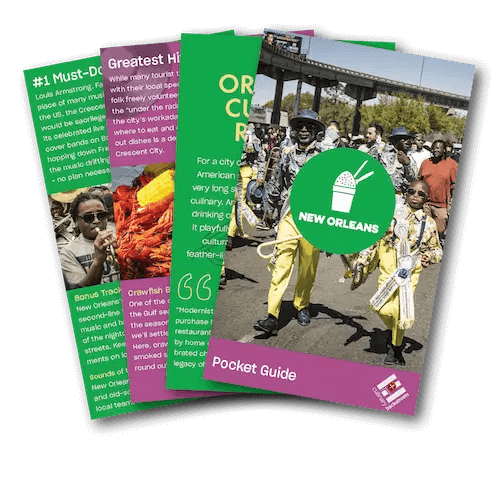
Get Your Free New Orleans Pocket Guide
Introducing our pocket-sized New Orleans guide — perfect for your next culinary adventure. Yours free when you sign up for our newsletter.
Get Your Free New Orleans Pocket Guide
Introducing our pocket-sized New Orleans guide — perfect for your next culinary adventure. Yours free when you sign up for our newsletter.
Visual Dispatches from the Frontlines of Local Eating
New Orleans Videos

New Orleans Food Tour with Culinary Backstreets
Culinary Backstreets® Envoys, Always Searching for the Next Hidden Gem
Meet Our New Orleans Team

Kelly
New Orleans Tour Leader

Matt
New Orleans Correspondent
Your Questions, Answered
New Orleans is a city in the state of Louisiana in the American South. It is located between the Mississippi River and Lake Pontchartrain, near the Gulf of Mexico. It is the most populous city in the state. It was once the capital of French Louisiana before the Louisiana Purchase in 1803.
New Orleans is famous for its gastronomical culture, night life, music, festivals and of course, Mardi Gras. Our most famous tourist attractions are the St. Charles Avenue Streetcar, St. Louis Cathedral, Jackson Square, Bourbon Street and Café du Monde, which are all within the Vieux Carre, the “Old City” or French Quarter. New Orleans is far more than this, however.
A number of neighborhoods are a tapestry of sights, sounds and tastes that are unlike anywhere else in the United States. Our Creole cuisine, represented in dishes like gumbo and crawfish etouffée, grits and grillades, po’ boys and muffulettas, and pho and banh mi, tell the history of the people who have made New Orleans home throughout its 300 plus years of existence. Our lush parks, such as Audubon Park and City Park, provide ample spaces for relaxation, reflection, and exercise. Live music is a way of life in New Orleans. We are the birthplace of both Jazz and Rock and Roll. Live Music can be heard throughout the city, from the Maple Leaf Bar or Tipitina’s uptown, to Frenchmen Street in the Marigny, with its strip of live Music venues. And of course, we are renowned for Mardi Gras, which we call “the best free party in the world.” In addition, our food and music festivals, such as French Quarter Fest, Jazz Fest, Satchmo Summer Fest, and others, bring out locals and visitors from around the world to experience America’s most unique city, with an Afro-Caribbean vibe found nowhere else.
New Orleanians are some of the warmest, most hospitable and embracing people in the world, but endemic poverty contributes to the higher rate of crime here compared to other American cities. Our city thrives on tourism, but it is best to take the same precautions as you would in other major cities.
New Orleans is a city of neighborhoods, from the leafy live oak lined streets of Uptown to the closely packed shotgun houses and arts and crafts cottages of the Bywater, all radiating out from the hub of the French Quarter, the original imprint of the city. Most first=time visitors tend to stay in or near the French Quarter. With its high concentration of hotels, tourist attractions, restaurants, nightlife, and walkability, it provides a good entry point into the city. For those looking for a quieter, less touristy area, the Uptown corridor between St. Charles and Magazine Street is ideal, with a variety of restaurants and shops, and easy access to the historic green streetcar line that runs between Carrollton Avenue and Canal Street. For those who want a more unique neighborhood feel, Mid-City, with its classic Creole Italian spots and neighborhood bars is a good option. And the Marigny and Bywater, with their distinct Caribbean vibe, walkability, and access to the Mississippi River at Crescent Park, are both excellent choices.
The New Orleans climate is subtropical, and the most pleasant time of year to visit is from October to May. This time of year is ideal not only because of the weather, but because of the range of activities available. New Orleans is crazy about American football, and the hometown New Orleans Saints are followed with a religious frenzy. Catching a Saints game at the Super Dome is about as New Orleans as it gets. New Orleans also puts on for the holiday season, and from Thanksgiving through the New Year the city comes alive with lights and festivities. This is the time of year to dine at one of the Reveillon dinners that happen throughout the city. This multi-course dinner was originally held after Catholic midnight mass on Christmas Eve, but now occurs throughout the Christmas season. On January 6, the twelve days of Christmas end and Mardi Gras begins. While Mardi Gras Day, or Fat Tuesday, is the culmination of the revelry, the Carnival season runs from Twelfth Night until early February or sometimes early March, depending on the Catholic calendar. And as winter gives way to spring, festivals season begins, with world classic music and food and fun.
For visitors, New Orleans is still less expensive than other destination cities. While our economy is tourist based, once you venture outside the French Quarter and into the neighborhoods of the city, local restaurants, bars and clubs can still be found that offer $10 po’boys and $3 dollar beers. National chains are the exception here, not the rule, so expect good value from local establishments.
New Orleanians love to argue about food. Behind the Saints, it is our number one sport. While New Orleans has many iconic foods, gumbo is the food we are most closely associated with. Gumbo is the quintessential example of the Creolized foodways of New Orleans. African, Caribbean, Indigenous, French, Spanish and Italian influences can all be seen in various iterations of the dish.
Not quite soup, but not stew either, New Orleans gumbo at its essence is a roux thickened broth spiked with local ingredients. What the ingredients are, the consistency of the gumbo, the darkness of the roux, tomatoes, or no tomatoes, filé or okra, are all points of contention. The dish typically begins with a roux of flour and fat, cooked to a desired degree of doneness, from a peanut butter to a dark chocolate color, although there are variations on this too. From there the, our holy trinity of onions, bell peppers and celery are added, as well as garlic and creole seasoning, which typically consists of salt, black, white and cayenne pepper, garlic powder and onion powder. Herbs are also added at this time. The stock used in gumbo can be seafood, chicken, or a mix of both. Chicken and sausage gumbo, usually made with a dark roux, is the most basic version of the dish. Creole gumbo, with its rich shellfish stock, can contain chicken, ham, gizzards, shrimp, crab, hot sausage (chaurice) and smoked sausage. It may contain filé powder (a thickener made from ground sassafras roots), okra, or sometimes both (although not typically).
In addition to gumbo, not to be missed New Orleans foods are po’ boy sandwiches, which are typically filled with fried seafood, roast beef, hot sausage or ham and cheese; beignets, a fried French-style doughnut; chicory spiked café au lait coffee; Creole fried chicken; and Vietnamese offerings such as pho and banh mi.
Early on in the Covid pandemic, New Orleans was hit especially hard, but has since become a leader in the state in vaccination rates, with at least 81.6% receiving at least one dose of the vaccine. Currently there are no indoor vaccination or masks requirements, but that is subject to change. For more information check out https://Nola.Ready.Gov.
New Orleans’ Louis Armstrong International Airport (MSY) is accessible by direct flights from most national and international airports. The best way to travel to and from the airport is via airport shuttle, taxi, Uber or Lyft. The airport is located approximate 20-30 minutes from the city center. It is recommended to arrive at the airport two hours before a departing flight.
While often thought of as an adults’ playground, New Orleans is a great city for children. The Audubon Institute runs a world-class zoo, aquarium and insectarium with a focus on programming for kids. The Children’s Museum in City Park is filled with exhibits to captivate young minds. Our parks, playgrounds and bike paths provide ample opportunities for play and exercise. For families with very young children, New Orleans can be challenging. Our streets and sidewalks are generally not stroller friendly, and the heat can be overwhelming at times. With proper planning, however, the city is a joy for children.
New Orleans is a subtropical climate, and in the winter, nights can get as cold as 32 F, and in the summer over 100. The winter months usually average in the mid-50s to low 60s, but it is not unusual to see days in the 70s and 80s during this time. February and October are the driest months of the year, while June through August are typically the wettest. Rain is a frequent occurrence in New Orleans, and overall the humidity is generally high here. Our most pressing threat are hurricanes, and hurricane season begins on June 1 and ends November 30, with August and September being the most active months. When visiting New Orleans, rain boots and an umbrella are advised. During the winter, a warm coat is recommended, and during the summer, cool, breathable clothes, a hat and sunscreen.
The closest beach to New Orleans is in Bay St. Louis, Mississippi, about an hour drive away.
New Orleans is home to some of the best restaurants in the United States, and is known for our unique Creole culinary viewpoint. Fine dining establishments such as Coquette, Commander’s Palace, Galatoire’s and Restaurant Revolution sit at the high end of the spectrum, joining neighborhood favorites like Dooky Chase’s Restaurant, Clancy’s, Patois, The Franklin, and Gabrielle. But above New Orleans is a city of joints, and most memorable meals are often found in the most unassuming places. Liuzza’s by the Track, tucked away by the Fairgrounds, serves a memorable Creole gumbo and a divine BBQ shrimp po-boy. Dong Phuong Restaurant, in New Orleans East, serves a full repertoire of traditional Vietnamese dishes. Mandina’s, in Mid-City, is the classic Creole Italian joint. And Zimmer’s deep in Gentilly, serves fried seafood po’ boys that are worth the drive.
For breakfast or brunch, decadent favorites like Brennan’s, Surrey’s and Elizabeth’s as well as newcomers like Toast, are solid, and our go-to is Buffa’s. You can grab a quick bite at Bywater Bakery and soul food at Two Sistas ‘N Da East, or drive up for a crawfish boil at NOLA Crawfish King.

